A







How do we learn from the past when we don’t know anything about it?
While historians ensure that the events of the past don’t fade into obscurity, that can be harder to do on a smaller scale. Institutional memory is a funny thing. That term refers to how an organization, that nebulous blob of people who are coming and going over the years, retains information about itself. The less time people spend in any given organization, the more holes in that institutional memory.
For a student newspaper like The Cascade, the lack of institutional memory is striking. Because we’re entirely run by students, most of us are only at the paper for a few years before graduating and never looking back. With every person that leaves, information about how (and just as importantly, why) things are done fades away, and hard-learned lessons are lost, leading to the same mistakes being made in the future.
Beyond that, all the important journalism our many writers have done over the years is relegated to the archives. Without a doubt, the same issues arise in other student-run organizations like the Student Union Society or clubs and associations.
Over the past year, The Cascade has been trying to remedy this problem in a couple of ways. Our previous editor-in-chief (and the author of this issue’s feature), Andrea Sadowski,
compiled a massive training manual bringing together about a decade’s worth of scattered “how-to” documents and succession reports, with the intention of future Cascade teams adding on to it and evolving it as they go.
But, as we say on the front of each issue, The Cascade has been around since 1993 — longer than many people on our current team have been alive. A lot of older work was never put online, and isn’t so easy to revisit. We have an archive room, but it’s only accessible when a member of The Cascade’s leadership is available to unlock the door.

To address that, we recently brought in our first-ever (as far as our institutional memory can recall) archivist. Admittedly, I’m biased, since he’s also my brother. Scott Mijo is a recent graduate of the Library and Information Technology program,
and has been volunteering at The Cascade for the past year, digging through decades of old papers to organize and digitize our history. While it’s still a work in progress, hundreds of past issues are now available in beautiful, searchable PDF, reaching all the way back to 1993. You can take a look for yourself at issuu.com/the-cascade.
Taking these steps may seem like a pain at the time; an easy chore to put off until later. But if the Student Union Building ever burns down, we won’t lose decades worth of independent reporting. If the entire executive staff is fired in a massive scandal (fingers crossed that doesn’t happen), their replacements won’t have to start learning how to run this wild organization from scratch. Institutional memory is a nebulous concept, but it’s one we need to actively preserve.
The
the
other
print circulation of 800 and is distributed at Abbotsford, Chilliwack (CEP), Clearbrook, and Mission UFV
and throughout the surrounding communities.
The Cascade is open to written, photo, and design work from all stu dents; these can come in the form of a pitch to an editor, or an assign ment from an editor. Pitch meetings will be digital for the remainder of the semester. Please email managing@ufvcascade.ca to be put on the assignment email list.
In order to be published in the newspaper, all work must first be ap proved by The Cascade’s editor-in-chief, copy editor, and corresponding section editor. The Cascade reserves the right to edit submissions for clarity and length. The Cascade will not print any articles that contain racist, sexist, homophobic, or libellous content. Letters to the editor, while held to the same standard, are unedited, and should be under 200 words. As The Cascade is an autonomous student publication,
s staff and collective, or associated members.
expressed do not necessarily reflect that of UFV, The

On Sept. 21, 2022, the new free breakfast program launched for the UFV community, run as a partnership between the Student Support Centre and the Student Union Society SUS). Set up as a self-serve breakfast pro gram, students are encouraged to come to S1111 from 9:30 a.m. – 11:30 a.m. every Tuesday, Wednesday, and Thurs day to have a free meal. Sarena Favaro, student support coordinator at Student Life, and Kaylee Lovesy, UFV-SUS food bank assistant, sat down with The Cascade to discuss how this project came to fruition and what they hope to accomplish.
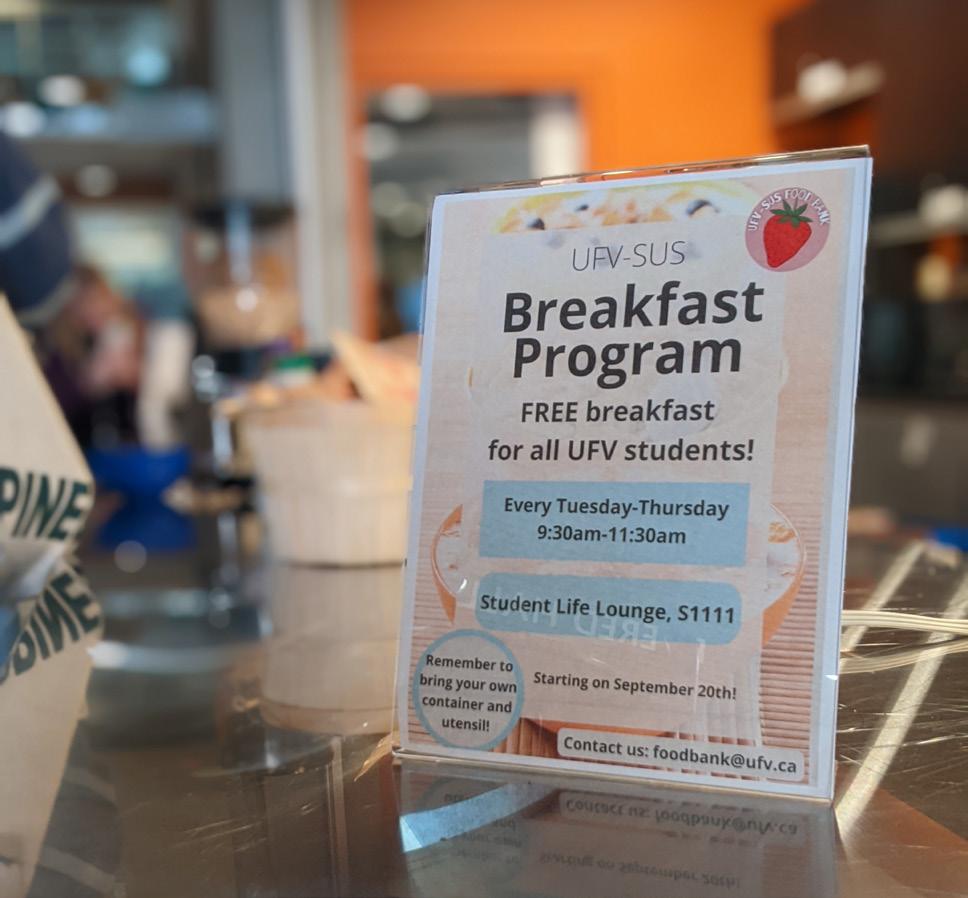
According to Favaro, they received outside funding for this project from United Way. The Student Support Centre and the SUS took roughly a year to collaboratively put the program together for students.
“Ultimately our main priority is food security and helping students achieve [it]. And we know that it doesn't solve the problem of food security, but we hope that it does offer students an opportunity to be fed,” said Favaro.
“And we also want to make sure that students have at least one meal when they're studying here at UFV,” Love sy added.
On opening day, there were 38 students and 28 the day after. On day three, they supported a record breaking to tal of 136 people with the breakfast program. When asked about how they accommodated so many students, Favaro said that they had to constantly refill supplies to cater to the large crowd.
“And students were so appreciative of the support that we were offering to them from each person in the line. We got such kind words and said that it really was a service that could support them,” said Lovesy.
On average, the breakfast club supports around 45 to 50 people a day, according to Favaro, but the numbers change depending on the week and if there are exams go ing on.
“We encourage students to bring their own reusable containers and utensils for the program and we do not provide any of that to reduce waste systems as much as possible.”
Lovesy said that they offer several grab and go break fast items through the program such as cereal, dairy and non-dairy milk, granola bars, soft flower cakes, oatmeal, granola, frozen berries, and yogurt.
What Favaro hopes to see is a continuation of the break fast program into the winter semester and the next year.
“I would love to see the breakfast program be sustained for students. I think that looks like thinking about more sustainable ways for us to offer the breakfast program in terms of human power and capacity,” said Favaro.
Favaro explained that they cannot predict how many students will use the program and it will be a “trial and error” experience as they continue with running the pro gram. Favaro hopes to use the funding allotted for the breakfast program and hopefully get more for the winter semester as well as the following fall and winter semes ters.
“To add to that, coming from the food bank perspec tive, I think it's been really useful to be able to let food
bank users know about this program as well and really introduce this as a food security initiative to them,” said Lovesy “And so alongside their hamper support that they're getting every 10 days, they can also receive free breakfast three times a week. We really see that as pro gressive in our food bank programs as well.”
When asked if they were interested in expanding the program to other UFV campuses, Favaro said that there are current talks of hopefully bringing this program to other campuses like Chilliwack as well, but there are no concrete details at this time.
A deeper look at ageism and providing support for mature students
RACHEL TAITOct. 5, 2022 marked the official celebration of the University of the Fraser Valley’s new status as an Age-Friendly University (AFU). Hosted at the Ab botsford campus Building K, Dr. Shelley Canning, associate professor in the Bachelor of Science in Nursing (BSN) program and the director of the Cen tre for Education and Research on Aging (CERA), shared her insights about the importance of this new designation at UFV, the process it took for the institution to receive this status, ageism, and how intergenerational learning is an important aspect of education.
Dublin City University created the AFU, and there are only eight other institutions in Canada who hold this designation. The purpose of an AFU is to create a welcoming atmosphere where more mature students can come to the institution and partake in obtaining a higher level of education; whether that be to upgrade, finish a program or start a new career. There are 10 principles of an Age-Friendly University, which were put together by Dublin City University in 2012. These principles are designed to help recognize and support the needs of more
mature students who are interested in obtaining a higher education, conduct research to better under stand what older students need, and “to promote intergenerational learning,” to name a few.
“[AFU] opens the doors to some opportunities and new ways to look at the role of the university in terms of the broader community,” said Canning on why this designation is important to UFV.
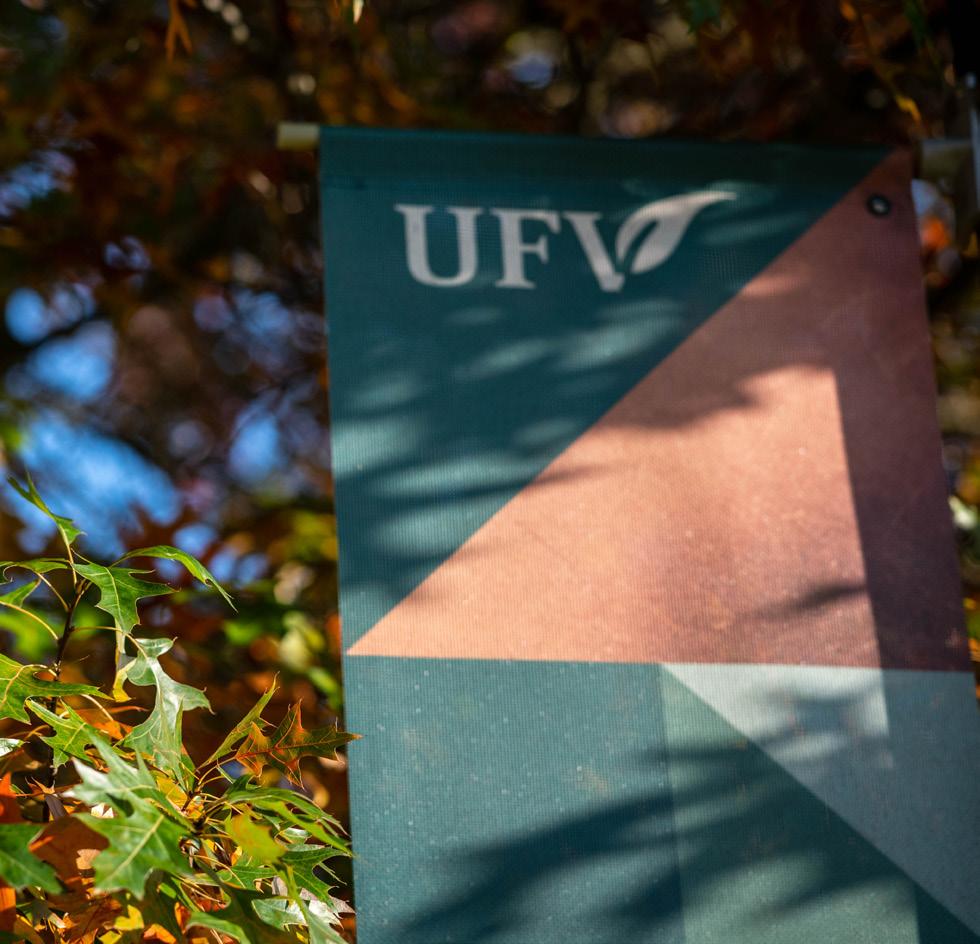
“Typically university students are the younger demographic. So we think of a university student being somewhere in their early 20s or late teens and that is absolutely true… but it's not only for that de mographic, and it has lots of power as an institution that can drive social change and change the lives of individuals who are outside of that younger adult group. It's a place that has meaning for all ages,” Canning explained.
According to Canning, the process to success fully obtain the AFU status took upwards of a year and a half, as many steps were required to achieve this goal. She first heard about the AFU during an aging conference she attended and she thought it was something UFV would be interested in pursu ing. This led to group discussions within CERA and their decision to pursue this initiative. During the same time, UFV Provost and Vice-President Aca
demic Dr. James Mandigo had just completed the new Equity, Diversity, and Inclusion plan, and Can ning said that becoming an age-friendly universi ty connected well with the principles in the plan.
CERA received some funding and worked with a “multi-disciplinary group” of students to help cre ate an “age-friendly audit.” During this time, they
Announced on Oct. 12, the Canadian Pacific (CP) holiday train is scheduled to embark on its Canadian and US tour starting Nov. 23, after tak ing a break in 2020 and 2021. Although this crowd favou rite event is not scheduled to stop in Abbotsford, it will be making a stop in Agassiz on Saturday, Dec. 17. The event is free to the public; however, attendees are encouraged to bring donations (food or funds) for local food banks in the community. The train will be lit up in festive lights and will host live music perfor mances from Tenille Townes, Mackenzie Porter, and Lindsay Ell. It’s not too early to start planning festive activities, like this one!
took a close look at the student de mographics, and research on age ism as well.
“Last summer, one of the psychol ogy students worked with me, com piling all the data that we had, writ ing up a formal report that got sent to our senior admin Dr. Joanne Ma cLean and Dr. James Mandigo. And then they sent forward a letter to Dublin City University, and it's that institution in Ireland that grants the designation.”
“[AFU] shines a light on what we are doing, but it also opens the doors to faculty and administra tion to consider ways that we could do more, “ Canning said regarding how this status is affecting the insti tution and the students.
“I think the whole ageism piece is built around this fear of losing func
tion, losing ability, and we value so much this idea of independence. And for many people, as they age, of course, they end up depending on other people for some things and we've positioned that in our minds to be such a negative, frightening thing,” said Canning.
“I think that we are socialized to see youth and ability in a very posi tive light. And we counter that with a more negative understanding of old age and some of the inability that comes with aging,” added Can ning, when asked what she hopes to see in the future concerning UFV and the AFU status.
As a researcher, Canning would like to see more research conducted on dementia that will give students a better understanding of aging and what it is like to live with the dis
ease as well as remove any miscon ceptions of the illness. Canning also points out that aging affects every one, and individuals should have a greater understanding of what the aging process is like regardless if they are in a kinesiology, nursing or social work program.
“I would love to see more broadly dispersed education. I would love to see older adults invited to campus because there's [a campus event] that [this age-group] would love or be interested in. I would like to see our more mature students feel that they're part of the university and that there's support for them so that they're able to share their strengths, but they're also able to learn the types of things that maybe younger students could help them navigate a little more easily.”
From Oct. 15–29, the BC Soci ety for the Prevention of Cru elty to Animals (BC SPCA) is offering 50 per cent off adop tion fees for all types of ani mals. This decision was mostly made in preparation for in coming animals who may need additional assistance as B.C. approaches cooler tempera tures. As many of the shelters have high rates of adoptable animals, the agency is hope ful that this promotion will en courage folks who have been wanting to adopt to take the plunge.
From Nov. 15, 2022 to Dec. 31, 2023, qualified international students will be able to work more than 20 hours per week outside of their institu tions. This move was made by the Liberal Government to help allevi ate the current worker shortage in Canada. This action is reported to increase the Canadian economy and will also be a beneficial opportunity for international students who need more income.
Presently, students are only al lowed to work in Canada if they have written permission on their study permits. If students are en rolled in courses and are working off campus, the maximum hours they can work is 20. If they are work ing at their institution, though, then they are not regulated by this limi tation. By law, international students can only work full time hours if they are not at school due to holidays and reading breaks.
In order to qualify to work off site of an institution, international stu dents are required to be a full-time student, working towards a degree, diploma or other certification, at a recognized post secondary school, with their program of study being a minimum of 6 months. They must also have a social insurance number.
According to a press release by Sean Fraser, minister of immigra tion, refugees and citizenship, there is a need for more workers in Canada as the economy continues to expand, and enabling international students to work more hours during the week is a way to address that need.
“I think it is very good for inter national students and it is easy for students to get their fees for the next semester,” said Kamalveer Kaur, a current UFV international student.
“Compared to the cost of living in Canada, 20 hours does not go a long way. This decision alleviates some of the financial burden these students face on a daily basis while recogniz ing there’s more work to be done.” said Melissa Chirino, chairperson of B.C. Federation of Students in a re cent press release.
On a yearly basis, it was reported that international students pay 430 per cent more than domestic stu dents do in tuition, according to Chirino’s press release. On top of this expense, international students also have to face additional costs such as food, shelter, bills, etc., in or der to survive.
“It is a great opportunity for inter national students because, by get ting more hours for working, they can easily manage all their expens es,” said Sukhmanjot Kaur, a cur rent UFV international student.
According to the press release by Fraser, there is also a new pilot program that will reportedly help speed up the procedure to extend study permits, which is in the works by Immigration, Refugees and Citi zenship Canada (IRCC).
Other students at UFV unani mously agree that enabling interna tional students more opportunities to work for longer hours during the week is a positive thing.
“I feel like it’s a good time to [re move the 20 hour cap]. [International students] probably need the money and hours to try and work … and there is a huge demand for a work force right now,” said Daniel Dam, a nursing student in the Bachelor of Science program at UFV.
According to Fraser, there are re portedly over 500,000 international students who are qualified and able to work more.
“I think it is a good opportunity for students to gain more experi ence, especially in today’s job mar ket where that is really valued. As someone from parents that are im migrants and international people, I think it’s a really good way to inte grate people into society more,” said Linh Nguyen, a fourth year student in the nursing program.
Professor of Horror Film & Lit Carl Peters discusses what makes watching spooky movies such a valuable human experience
Kellyn KavanaghEnglish professor Carl Peters loves horror. From his early childhood days watching the old Hollywood classics and into adulthood, Peters has built a career in academia and writing about his favourite books and films. In the summer of 2022, he taught a class focusing on horror film and literature, as well as his expanded concept on what constitutes a horror film. For Peters, almost anything that profoundly disturbs, shocks, and challenges viewers could be considered horror.

What is it about the horror genre you find so en dearing?
I’d say my fondness for horror goes back to my for mative years. I remember seeing The Wizard of Oz, and being amazed by the imagery and disturbed by the themes in the story. Particularly the scene of Dorothy’s dream. The imagery of the witch on the bi cycle, the house falling on the other witch, and then
the shoes. Seeing the shoes on the feet of the body underneath the house, followed by the good witch waving her wand and making the other witches' feet curl up. That terrified but also fascinated me.
Do you think engaging with horror films can help us confront difficult circumstances in our lives?
I think so. Good horror films are always aware of that. When you listen to directors, you’ll find they draw attention to something that hurts. They take us into different worlds and systems, introducing us to characters facing major obstacles that we can grapple with. David Lynch is great at this. He takes us to some dark places and creates some difficult challenges through a series of images that can be both dreadful and benign. This juxtaposition pro duces an effect that one is not always ready for, and that can be a difficult experience. I think that’s healthy. It challenges us to reconsider how we process our own circumstances.
Why do you think horror is such a polarising genre?
I think most people tend to see horror as gratuitous. They might see it as superficial entertainment. One might ask themselves, “why would I watch these things happen to someone?” or, “why do I need to see this?” and not give any credence to the themes underlying the images. People will say some pret ty damning things about the genre, and at the end of the day it is their choice what they do and don’t want to see. However, I think they may be denying themselves a transformative visual experience.
What was the most recent horror film that impacted you?
Two films come to mind, one was a documentary on King Henry VIII and the other would be Jordan Peele’s Get Out. While the King Henry VIII docu mentary wouldn’t traditionally be considered hor ror, the subject matter deeply unsettled me. The grisly manner in which he decapitated wives who didn’t give birth to sons was horrifying. I found myself becoming anxious towards the whole idea of
the monarchy as the film progressed. Jordan Peele’s films also really stand out to me, especially Get Out I remember watching it at home. The scene where the main character is being introduced to his girl friend’s mother and father, knowing that something wasn’t right — it gives me shivers thinking about it!
Of course, Jordan Peele is up there. I think he’s one of the best in the genre right now. I’m an outspo ken fan of Brian De Palma, the director of Carrie and Dressed to Kill. David Lynch is another one of my alltime favourites. I love how he started as a painter before he became a filmmaker, you really see it in his films and I think it’s amazing. I also love the films of David Cronenberg, Elaine Renee, and Jean Luc Goddard.
Are you currently working on any horror related projects?
I’m currently running a documentary film class and am submitting proposals for a few classes I’d like to run in the future. I’m currently preparing a list of horror films I would like to present at UFV, and will hopefully have more to announce on that soon.

What would you like for students to take away from the films they watch this Halloween?
I’d like for students to not just consider the narra tives laid out in exposition when watching films, but to extrapolate their interpretations of images by ex perimenting with the ways they watch films. For in stance, when I present some horror films in a show ing, I will change things about the experience such as the order in which I present specific films, turn ing off audio, or playing with the lighting. Watch ing a film can be so much more than just viewing the film from beginning to end, the circumstances in which we watch the films can have a profound effect on the overall experience.

Electric vehicles are not the magic bullet some think they are
KAIT THOMPSONAt the start of the month, Prime Minister Justin Trudeau announced that Ottawa will invest over $200 million into a Quebec mining company that will help to increase the production of minerals used in electric cars and batteries such as lithium, titanium and scandium. This investment, as a part of the “Strategic Innovation Fund,” is a part of a plan to make Canada the “global supplier of choice” for these critical minerals that power what some have come to view as the future of transportation: electric vehicles.
Over the summer, Trudeau remarked that his vision for Canada is that we aren’t “just going to be a global player in EVs,” but that we will become global leaders. And really, who could blame them for being such a big supporter? Canada has an estimated 2.9 million tonnes of lithium resources, and mining operations at home would create jobs, increase our GDP, and make EVs more accessible for all.
Unfortunately, it isn’t nearly as clean cut as some believe. Lithium for example is a non-renewable resource itself, and it’s expensive and difficult to recycle. It’s also worth mentioning that reports in the last few years have found that EVs are some of the most unreliable vehicles on the market, and can be twice as expensive to repair when they break down. They’re also still out of reach for many Canadians; the actual cost of purchasing an EV seems to only be going up, not down as originally predicted.
Personally, I find there is a lot of parallels between the the EV conversation and what is going on with sustainable fashion right now; while there are many ways to reduce the impact your clothes or your car have on the environment, too many of us seem to get stuck at the “purchasing expensive, new, sustainable alternatives from companies that use all the right buzzwords” step. “Keeping and using up what you already have” and “purchasing second hand” don’t have nearly the same appeal. But this mindset ignores not only the amount of misinformation that often comes along with these “sustainable” brands, it also leaves out those who cannot afford to spend $70k on a new car or $200 on a sustainably-made turtleneck sweater.
The difference is, the tide seems to be turning on sustainable fashion; thrifting has become more mainstream (although that topic has its own issues) and it feels like people are realizing that new is not always better. As somebody who has only ever had second-hand cars — ones that were usually older than I was — I feel like I might be able to make a case for why it’s time that our attitudes about greener transportation get the same treatment as the thrifting revolution.
Researchers have found that keeping older fuel efficient cars on the road longer reduces emissions significantly more than ramping up the manufacturing process needed to supply everyone with EVs would. In fact, a study conducted at a Japanese university found that keeping your car for just ten per cent longer means a drop in emissions.
“But Kait,” I can hear you saying. “What about fuel mileage? Doesn’t that count for something?” It does! But contrary to popular belief, there are many cars from the 1990s that continue to clock better fuel mileage than many modern cars. The idea that all old cars are gas-guzzlers may have been true 30 years ago, but unless you’ve got your eye on a ‘73 Lincoln Continental, you’re likely okay.
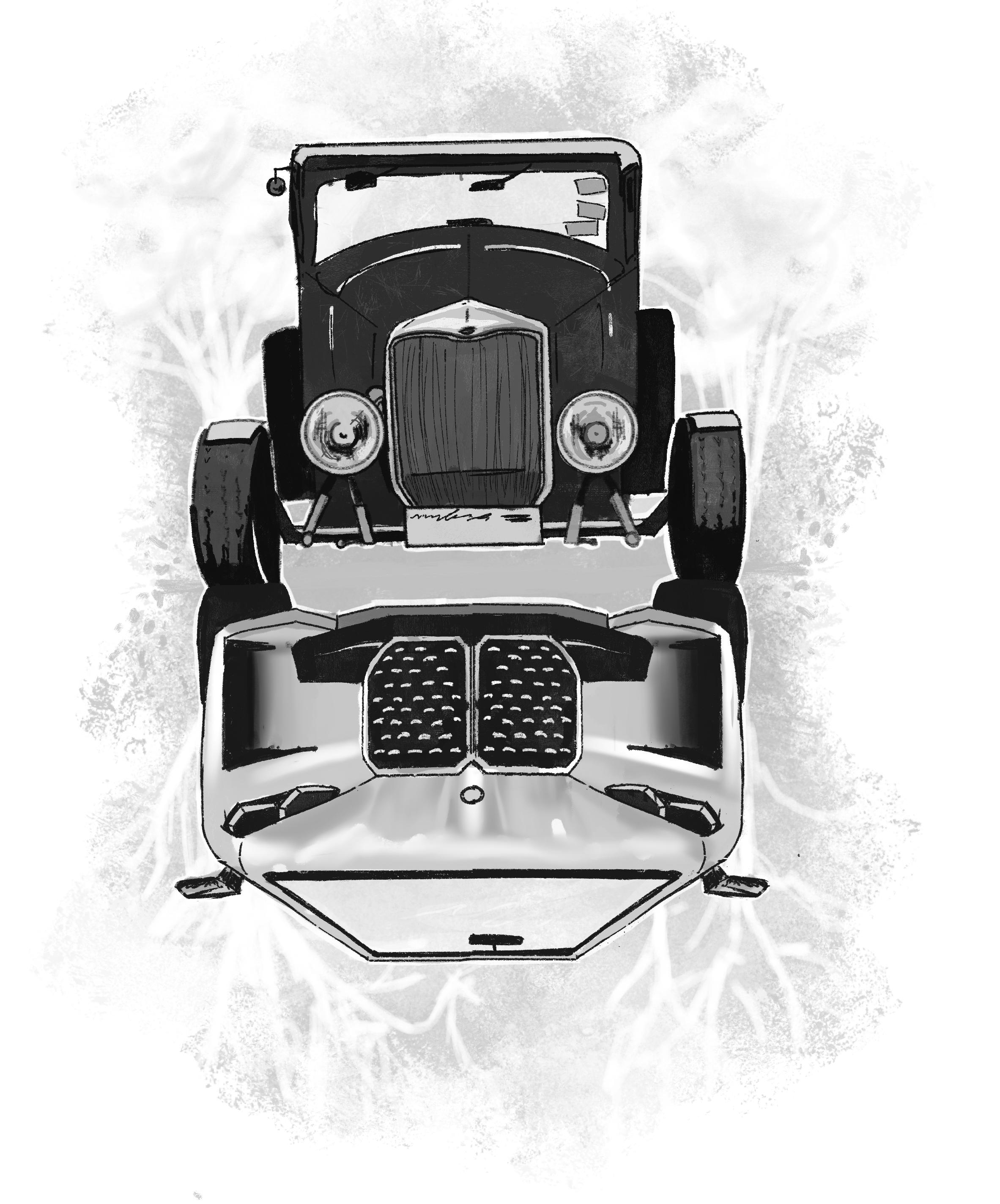
Another point, old cars are usually more affordable and easier to repair; the right to repair is something that is quickly becoming a contentious issue in Canada, as car manufacturers come out with newer models that use complex tech systems to lock out mechanics and consumers alike from being able to complete basic repairs. The environmental implications of a system that requires everyone to rely on only a handful of manufacturer-certified service locations are hard to ignore, especially in a
country as spread-out as Canada.
Ironically, this power struggle was only intensified at the onset of the chip shortage, a global supply chain disruption made worse by climate change-related disasters in Texas and Taiwan. This shortage could continue for years. In the meantime, the market for used cars has continued to strengthen.
I’m not trying to say that nobody should purchase an EV or a hybrid. If you can comfortably afford it, it might be the best way to reduce your CO2 emissions. But I think that there needs to be room for nuance and flexible thinking when we talk about fighting climate change. Options beyond just getting hooked on a different non-renewable resource are worth our consideration. The sentiment that is kicked around often among climate activists is that electric cars are truly here to save the automotive industry, not the planet. Finding ways that everyone from all backgrounds can contribute is critical, so long as the goal is truly to help the environment.
“Unfortunately, it isn’t nearly as clean cut as some believe. Lithium for example is a non-renewable resource itself, and it’s expensive and difficult to recycle.”
Self-proclaimed “wife guys” are being exposed as less than faithful partners; is it time to retire this personality trait?
EVA DAVEYThe concept of viewing your romantic partner as “the ol’ ball and chain” has been retired, and in its place has come a new era; one that makes loving your partner your “thing.” Really, it should be a no brain er; go ahead! Love your partner! It becomes tricky though when you decide to make this your entire personality, and go as far as to make it your market able brand in a professional or public environment. It’s a trend that is resulting in certain public figures being labeled as “wife guys.”

Recently social media has been buzzing with the news that internet personality Ned Fulmer, a now former member of The Try Guys, has been unfaithful to his wife. Since the news broke, major news publica tions have been talking about the scandal and there was even a Saturday Night Live sketch lampooning the subject. Cheating scandals are not new to celebrity/influenc er culture, so why was this so shocking to millions of people? Simply because Fulmer was one of these so-called “wife guys.”
What is a “wife guy” exactly? These are the guys that really only talk about how much they love their wife, usually painting the perfect picture of their relationship to a point where it seems unattainable to have one like they do. These
“For many this particular situation with Fulmer, one of the more notorious and famous “wife guys” out there, feels more personal.”
are the type of people that want praise every time they utter their love for their spouses or show any display of affection towards them on social media or in real life. People with these personas might believe that they can get away with infidelity or poor behavior behind closed doors, because who would want to believe a guy as nice as him could do this kind of thing?
For many this particular situation with Fulmer, one of the more notorious and famous “wife guys” out there, feels more personal. Fulmer has used

his marriage as a vehicle to gain views on YouTube videos and to create a cookbook. Fulmer is not the only wife guy to ditch this persona after being ex posed for cheating, though. It feels rather nihilistic to say cheating happens — I’m not defending it by any means — but somehow salt is rubbed into the wound more when the cheater is a wife guy, as they typically love to market themselves as safe, emo tionally available, and committed. They are always at our fingertips through social media, playing into the idea that women love a committed man (ironic, I know).
But the truth is that the “wife guy” is truly just a new type of branding that men are playing into.
TikTok has been flooded with people deem ing themselves a golden retriever boyfriend (someone that is just nice), a himbo (he is nice but not the brightest), or a soft boy (thinks painting his nails is peak feminism). This year there has also been a rise in another type titled normcore boyfriend, where it has become appealing to be in a relationship with someone that has no social media presence whatsoever. The addition of the wife guy is simply just another type of dude to fill this roster of rotating boys that social media wants us to find desirable and cool.
At the end of the day we shouldn’t re ally care about these people. These aren’t our personal relationships, but they sure are paraso cial, and we have no real connection to any of the drama while still feeling invested. The reason people care so much about all of it is because we thought we could trust these men. The real life relationships are put on pedestals because we hope that one day we will find a love as secure and com fortable as they did; they’re real life fairy tales. I be lieve the Fulmer and Try Guys scandal marks the downfall of this popular persona. Now that the bub ble has burst and my vision is clear, I am ready to say goodbye to the wife guy.
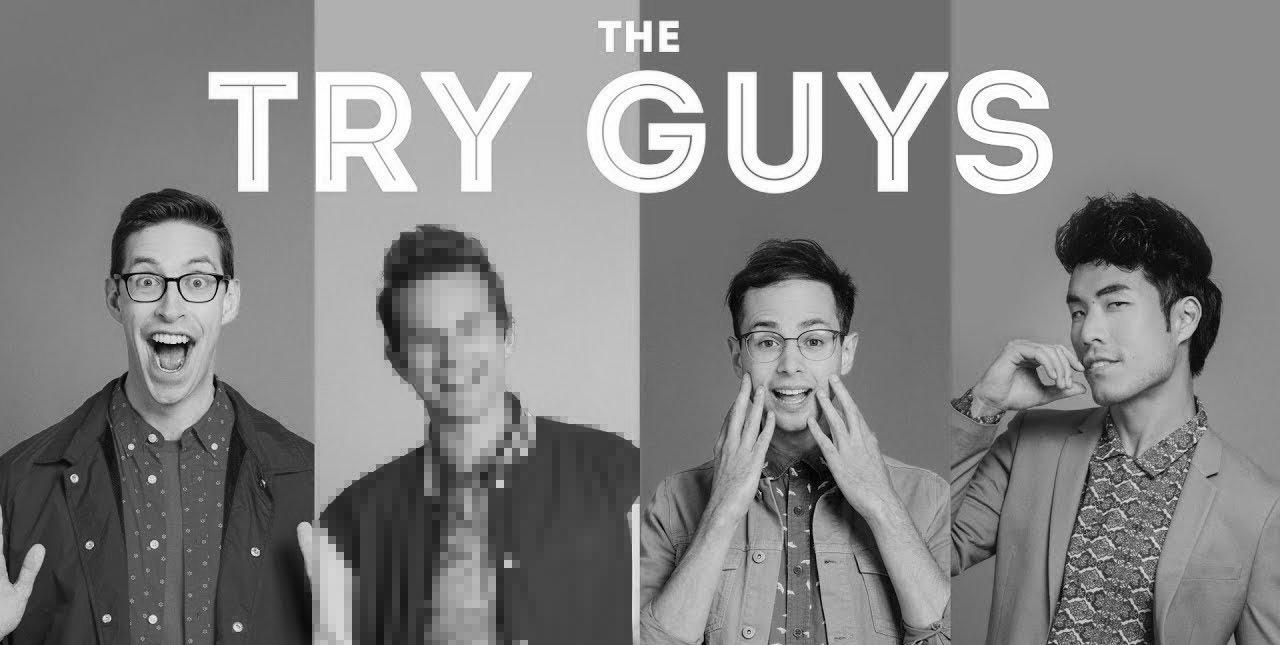
“The real life relationships are put on pedestals because we hope that one day we will find a love as secure and comfortable as they did. They’re real life fairy tales”Try Guys via YouTube



I am a proud plant parent. I bought my first houseplant as a teenager — a humble fern, which I admittedly killed within two weeks. Cause of death: dehydration. My second houseplant was an innocent succulent. Cause of death: overhydration. A truly tragic tale, I know. Nevertheless, I have spent the last decade spending my savings account on a plethora of species; killing fewer and fewer each year. Currently, my collection sits comfortably at around 35 houseplants and I have only slowed down as I have run out of window space.
I am not the only one who has recently acquired a fascination for collecting these tropical beauties, though. There has been a significant increase in houseplants since the pandemic. Some sources state that the interest in houseplants increased when COVID-19 caused many people to adopt a remote work environment and were forced to stare at the same four, beige walls of a home office all day.
More than aesthetics, though, there are actual health benefits to cluttering your house with live plants. One study found that 74 per cent of people who purchased houseplants during the pandemic experienced “emotional benefits.” For many, taking care of a plant can give people a purpose and create some kind of routine. Similarly to how getting out in nature can improve our mental wellbeing, bringing plants indoors — into our living spaces — is also said to have impressive psychological benefits.
I have purchased many of my plants not just for their great looks and personality, but for their unique ability to purify the air in my house. Species such as spider plants, pothos, peace lilies, and snake plants are all listed as plants that have filtration benefits. Many of these can filter harmful toxins such as carbon monoxide (commonly from vehicles in a garage), benzene (found in detergents), and
ammonia (found in some cleaning products).
Like with many great things though, there are often sustainability downfalls to them; even with plants. Although the plastic pots that nursery plants are sold in are an obvious pollution issue, it is the soil that they sit in which is actually a significant cause for concern. Peat moss is defined as decomposed organic matter, specifically material found in bogs (wetlands). It is especially
useful for its ability to maintain a steady moisture balance in the soil while also decreasing the likelihood of soilbased diseases. It is often mixed in regular potting soil, or many choose to mix it into their pots to optimize the health of their plants. I know that I certainly didn’t think that the soil I was purchasing for my plants could be harmful because, let’s face it, it is literally dirt. How can dirt be unsustainable?
The issue with peat moss is that it takes thousands of years for the plant matter to break down and turn into the fibrous material we know as peat moss. As such, these wetlands house a seriously impressive amount of carbon dioxide. When we harvest this material from the earth we simultaneously release large amounts of CO2 into the atmosphere. The Washington Post described peat moss as a “carbon bomb,” stating that although it only covers 3 per cent of the earth, it stores nearly 30 per cent of the carbon dioxide stored by our soil.
Peat moss isn’t all bad though if we leave it alone. Think of it as a big, fibrous sponge that, alongside trees, soaks up a good chunk of free-floating greenhouse gasses. There can be some real climate change benefits to it. But the key here is to stop harvesting it, no matter how much it helps our houseplants thrive. It’s as simple as swapping out your usual potting soil for a peat moss alternative. Mother Earth will thank you for it.
“For many, taking care of a plant can give people a purpose and create some kind of routine. Similarly to how getting out in nature can improve our mental well-being, bringing plants indoors — into our living spaces — is also said to have impressive psychological benefits.”
“The Washington Post described peat moss as a “carbon bomb,” stating that although it only covers 3 per cent of the earth, it stores nearly 30 per cent of the carbon dioxide stored by our soil.”Illustration by Washington Reimer

Ever since I moved into a house with a full size kitchen, I haven’t been able to stop baking. Pies, cakes, muffins, breads — you name it, I am probably trying to learn how to bake it. It’s funny though, I don’t really know what I’m doing. This hobby quite literally sprung up over night. As an insomniac, my late night baking adventures have become my go-to for clearing my head and helping me unwind. Like my own little medita tion practice, it’s a ritual carried out in the quietest part of the night when my thoughts are at their loudest. The process of carefully measuring ingredi ents pairs well with the tactile experi
ence of rolling out dough, and suddenly my anxieties of the day are melting away as my stand mixer hums softly in the corner. There is something about the slow, one-thing-at-a-time nature of bak ing that feels luxurious in an overstimu lated and hyperactive world. So, next time you get tired of counting sheep, I recommend making a pot of sleepytime tea and busting out that chocolate chip cookie recipe. Worst case, there’s noth ing quite like fresh baked cookies for breakfast. Best case, you too might find inner peace at the bottom of a mixing bowl.
Kait ThompsonA regular occurrence in my life is trip ping on stairs. Normally, I catch myself and prevent any real injury. Unfortu nately, my most recent trip turned out to be more of a quick drop that ended with a free ticket to the emergency room. If there is any advice I could give at this moment, it’s to always watch your step. I’d only managed a couple steps before falling face first down a flight of stairs. I’m not sure if I’m lucky or not, since I fell down stairs and landed on my neck, but also managed to escape with minimal injuries.
In the wake of my incident, the question of how to answer what happened to my face has come about. Do I say the truth, silly as it is, that I merely tripped on my own two feet? Do I make up a grandiose story of fighting a bear? Should I make fun of my incident and say, “As bad as I look, you ought to see how those stairs are looking”? I like to change the answer each time I am asked, though I think my favourite one is “I fought some stairs… and the stairs won.”
Emmaline SpencerWant to learn the best way to give up people-pleasing tendencies? Drive at or just above the speed limit. I’m serious. In fact, obey nearly all traffic laws and watch as the driving world practically crumbles in your chaoticgood wake. If you immediately scoffed at my suggestion of being a hallmark driver, hear me out: nearly everyone will still pass you on roads and highways if you’re going 10 km/hr above the speed limit. So, if it’s inevitable, you might as well go slower to avoid a ticket and the risk of a bad collision, as well as develop

the virtue known as patience. I drive the speed limit to train myself to go at my own pace and stop worrying about external pressures. Screw you, toxic road users. I’m chasing my bliss at a cool, calm, and collected 50 km/hr (maybe 55 if I’m being naughty). However, if you decide to use these techniques instead (or alongside) therapy for people-pleasing, just remember not to stop suddenly and to leave more space between you and the car in front of you.
Over time, it feels as though cell phones have become more fragile the more advanced they get. When I had my first cell phone, a Motorola Razr, it felt invincible. It could be dropped without anything happening to it, with no extra accessories needed to protect it.

Yet, after recently getting a new Samsung phone, I instantly had to buy a screen protector. The screen protector has become an essential item to avoid getting cracked screens, scratches, or
having accidents (ie. dropping it from short distances). Without it, it feels like I am living on the edge, hoping for something not to happen to it.
Companies should include the protector, or at least create more resistant products. Since we are going back to some flip phone style smart phones, the durability should make a comeback as well.

 By: Andrea Sadowski
By: Andrea Sadowski
In 2022, an average of six people die every day in B.C. due to drug toxicity poisoning. Abbotsford has had the fourth highest number of deaths in B.C. since 2019, just behind Vancouver, Surrey, and Greater Victoria. The highest rates of death per capita are in the health service areas of Vancouver, Northwest, Thompson Cariboo, and Northern Interior. The Public Safety and Solicitor General reported in August of this year that “Illicit drug toxicity is the leading cause of unnatural death in British Columbia and is second only to cancer in terms of years of life lost.” These deaths overwhelmingly impact males between the ages of 30 and 55, and while the demographics of people who use drugs are vast, Indigenous folks and people living in poverty and unstable housing are disproportionately affected by this crisis. It’s been six years since B.C. declared the opioid crisis a public health emergency. This year, as of August, 1,468 people have died of illicit drug toxicity in this province alone. So, here are the basics you need to know about a crisis that is continuing to kill our friends and family at rapid rates.

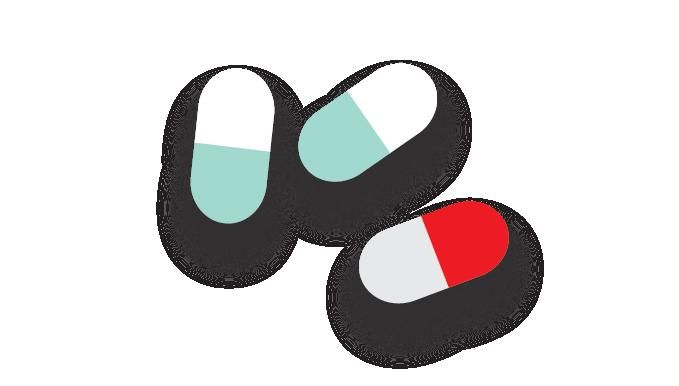

More commonly known as an “overdose,” health authorities have been gradually switching their language to the terms “drug poisoning” or “illicit drug toxicity” in recognition that people are dying not necessarily because they are not managing their drug use responsibly, as the term “overdose” implies, but rather the illicit

“... people are dying not necessarily because they are not managing their drug use responsibly, as the term “overdose” implies, but rather the illicit drugs themselves are fatally contaminated.”
drugs themselves are fatally contaminated.
“[Overdose] suggests that if they’d just been more careful, they wouldn’t have died, when we know for a fact [that] the market is so toxic right now that there is absolutely no way for people to know what’s in the substance they’re buying,” said Lisa Lapointe, chief coroner for British Columbia, in an interview with the CBC
What is in these substances that make them so toxic?
In the majority of cases, multiple substances are detected in these drug toxicity deaths, meaning that opioids (such as heroin and fentanyl) and stimulants (such as methamphetamine and cocaine) are often combined or used together. Fentanyl, a fullysynthetic opiate used to treat pain, or an analogue of fentanyl has been detected in 81 per cent of drug-related deaths in B.C. so far in 2022.

“What we used to see when fentanyl first hit our streets was very small percentages,” said Constable Mike Serr of the Abbotsford Police Department. “Like two per cent would be how much fentanyl was in a pack sold to an individual on the street. Today, it’s not uncommon to see 16 or 17 per cent … What we’re seeing now is very, very potent.”
Another commonly used substance that has reared its ugly head in the overdose spike is benzodiazepines, more commonly known as “benzos.” An anti-anxiety medication, benzos were found in 22 per cent of samples
in August, 2022. Better known by some of their brand names of Xanax, Valium, and Ativan, benzos are not opioids and are therefore resistant to the opioid-blocking drug Naloxone, which makes reviving overdose victims increasingly challenging for first-responders and front-line workers.
According to Constable Serr, benzodiazepines are one of the more difficult drugs to detox from, so not only is it a challenge to revive someone from an overdose after they’ve used benzos, but it is increasingly harder to get off these drugs for people who want to recover.
“I smoked it and instantly I was fucking throwing up all over everywhere and I just couldn’t move for four days,” a 17-year-old Abbotsford resident told a Vice News reporter, recalling the first time she used benzodiazepines.
There has been a slow shift from pushing people who consume drugs through the revolving doors of recovery and treatment centers instead to dealing with the crisis at the source — the drugs themselves.
“This is not an addiction crisis,” says Vancouver activist and former heroin user, Garth Mullins, in a conversation with CBC News. “It’s a death crisis.”
The B.C. Coroners Service’s most recent panel stated that the primary cause of the increased death toll is due to the highly toxic nature of the street supply of illicit drugs, which is exacerbated by the province’s drug policy framework of prohibition.
As toxic drug deaths spiked throughout the province during the onslaught of COVID-19, B.C. exempted healthcare professionals to prescribe a “safer supply” of regulated substances to their patients in an attempt to save lives and get vulnerable individuals off of the toxic street supply.
The Ministry of Mental Health and Addictions reported that over 12,000 people have been prescribed safer drugs between March 2020 and December 2021. While these numbers may seem high, this program has proven to be very limiting towards who can access this safe supply, which physicians offer this service, and the strength of drugs prescribed.
This number has been refuted as being inaccurate by public health experts and advocates who claim that people being prescribed pharmaceutical alternatives to opioids, like oxycodone and hydromorphone, in order to manage withdrawal symptoms and try to wean off the street drugs shouldn’t be deemed a “safe supply.”
“The substances they’ve made available to drug users aren’t what drug users need or want,” writes harm reduction advocate Guy Felicella in an op-ed for Vancouver is Awesome. “Prescribing hydromorphone is like offering carrots instead of chips and saying, ‘Hey, you said you were hungry, and these are crunchy too!’ Most people are going to skip the carrots and find their chips somewhere else because eating chips isn’t only about hunger and a satisfying crunch. It’s also about cravings and euphoria.”
Advocates still think more needs to be done in order to disrupt the toxic drug supply, such as regulating illicit substances in the same way that the government regulates alcohol, cannabis, or food. By giving consumers the substances that they crave, along with the information they need to be able to safely consume those substances, they are able to make an informed choice that could save their lives.
“What we want is a regulated drug supply, not a safe supply,” Drug User Liberation Front (DULF) co-founder Eris Nyx told The Cascade “The idea that drugs are safe is kind of ludicrous … Alcohol is not safe, but we do have a regulated alcohol supply right?.

On May 31 of this year the province announced that they are going to decriminalize the possession of minor amounts (2.5 grams or less) of illicit substances between Jan. 31, 2023 to Jan. 31, 2026. This three-year exemption is in no way legalizing these substances, but rather will cause individuals who use drugs to not be penalized.
B.C. is the first province in the country to receive this type of exemption from Health Canada.
While this may seem like a ground-breaking step, experts are still critical of the extremely low threshold of 2.5 cumulative grams of illicit substances, two grams less than the proposed 4.5 grams advocates had requested from Health Canada. This small threshold

sets up many people for failure, as those who have mobility issues or live in rural areas often need to buy larger quantities at one time. Lapointe also noted in an interview with CBC that racial bias and prejudice within law enforcement was a concern of hers, as police officers could interpret this threshold for personal use in different ways.
“If the thresholds are too low, it exposes [people who use drugs] to more increased police surveillance, it exposes them to having to buy smaller quantities and so accessing the illegal market is done more often,” said Donald MacPherson, director of the Canadian Drug Policy Coalition in an interview with CBC
A letter signed by over 20 drug policy advocacy and research organizations responded to their rejected recommendations put forth by B.C.’s Core Planning Table. They argue that “a 2.5-grams threshold flies in the face of your governments’ commitment to evidence-based drug policy, anti-racism, and reconciliation with Indigenous communities.”

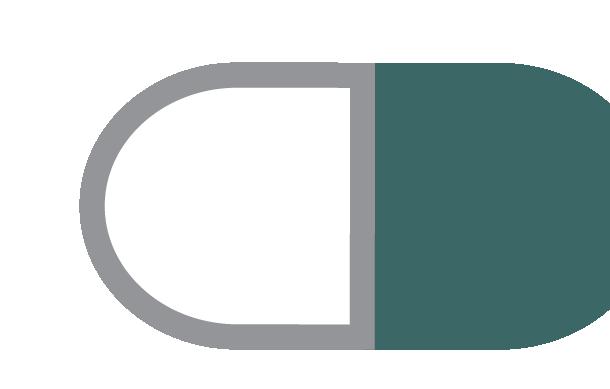
This isn’t the first time Health Canada has rejected proposals that could save the lives of people who use drugs. Despite support from Vancouver city council, Vancouver Coastal Health, the B.C. Centre on Substance Use, and the First Nations Health Authority, Health Canada denied an application submitted by the DULF to formalize a compassion club model of safe supply.
Compassion clubs are evidence-based models for distributing a safe supply of illicit substances directly to consumers, which were legally obtained from a pharmaceutical manufacturer. DULF and Vancouver Area Network of Drug Users (VANDU) submitted a proposal to Health Canada in October 2021 to legalize a compassion club model for distributing controlled drugs. Their proposal was so unique because it relied on accessing drugs through the illicit market, but ensuring these drugs were properly tested and labeled before their sale at-cost to the consumer.
Despite the rejection of their proposal by Health Canada in July, DULF and VANDU continue to distribute tested substances of cocaine, heroine, and methamphetamine in an effort to save lives. As of Aug. 31, the group has distributed 201 grams of substances with no reported overdoses or deaths.
DULF is known for distributing free doses of tested cocaine, heroine, and methamphetamine in one-off distribution events, also known as “episodic compassion clubs,” usually on major anniversaries related to the epidemic. The group handed out $3,000 worth of free drugs outside of the Vancouver Police Department on July 14, 2021.
“If people know precisely what they’re putting into their body, they won’t overdo it, no one wants to intentionally overdose,” said Nyx.
Supervised consumption sites are safe places people can go to use drugs; they are often equipped with harm reduction supplies like clean syringes and pipes and staff who can immediately respond in the event of an overdose. These sites are important facilities that help destigmatize drug use, provide a bridge of resources to people who use drugs, and save lives on a daily basis. No one has died at any supervised consumption or overdose prevention site in B.C. since the first sanctioned sites opened in 2016.
There are currently three sites in Abbotsford recognized under Fraser Health: SARA for Women, Abbotsford Mobile Overdose Prevention Site, and Phoenix Society. The first two provide services for people who consume their drugs by inhalation, a point of
Top drugs involved among illicit drug toxicity deaths, 2022

contention among many other sites of this nature.
These sites often cater to people who use needles, even though three quarters of people killed in 2021 due to toxic drugs had inhaled their fatal dose. Despite sites like these proving to be costeffective ways to provide resources to those who use drugs and mitigate many drug-related deaths, they continue to get shut down around the province, especially the sites that allow inhalation.
Conservative towns like Chilliwack make it even harder for people to safely use drugs and access harm reduction services, as the city council created new zoning regulations in 2021 that required public consultation and the authorization of city council to approve overdose prevention sites on a case-by-case basis.
These sites often cater to people who use needles, even though three quarters of people killed in 2021 due to toxic drugs had inhaled their fatal dose. Despite sites like these proving to be cost-
“Better known by some of their brand names of Xanax, Valium, and Ativan, benzos are not opioids and are therefore resistant to the opioidblocking drug Naloxone, which makes reviving overdose victims increasingly challenging”
effective ways to provide resources to those who use drugs and mitigate many drug-related deaths, they continue to get shut down around the province, especially the sites that allow inhalation.
Conservative towns like Chilliwack make it even harder for people to safely use drugs and access harm reduction services, as the city council created new zoning regulations in 2021 that required public consultation and the authorization of city council to approve overdose prevention sites on a case-by-case basis.
As The Cascade explored in a 2020 feature on the subject, harm reduction seeks to reduce death, disease, and injury from illicit drug use for people who are unable or unwilling to stop. Harm reduction recognizes that complete abstinence from drug use may not be feasible for everyone, and therefore offers a wide range of non-judgemental support for people to be safe and healthy wherever they are at in their
journey with substance use. This approach understands that there are risks when people consume psychoactive substances, so it aims to give people practical strategies to mitigate these harms.
Harm reduction is about prioritizing the immediate needs of those who use illicit substances and offering them a variety of different prevention and treatment options. Harm-reduction measures include the following: distributing safe supplies (syringes, cookers, pipes, tinfoil, etc.), giving out take-home naloxone kits, offering safe sex supplies, placing sharps disposal containers in public areas, offering Opioid Agonist Therapy (medications like methadone and Suboxone), and implementing supervised consumption and overdose prevention sites.
Harm reduction is a way to positively transform common social narratives about illicit substances and the people who use them. It is a person-centered, evidence-based approach that recognizes the multitude of social determinants that impact a person’s relationship with illicit substances. It is an approach that moves people from a privileged, morality-led position that focuses on whether or not people should be using drugs in the first place, to one of empathy and recognition that people from all demographics use drugs everyday, and these people are worthy of life-saving medical treatments.
Shouldn’t we push towards more recovery and treatment facilities instead?
In her CBC interview, Lapointe noted that people with severe drug dependencies do not make up the majority of drug toxicity deaths in B.C. The drug supply has become so increasingly toxic that anyone using any kind of illicit substances is at risk of poisoning. Karen Ward, a drug policy consultant with the City of Vancouver, said to CBC News that non-regular drug users are more at risk because their bodies don’t have the same kind of tolerance as daily users.
“Not everyone who dies is addicted,” said Ward. “[Addiction is] not what’s killing people. It’s the drug supply that’s killing people. Whether you’re using once or using 10 times a day, it’s still going to kill you.”
If anything, we should advocate for more mental health treatment and services, as Michael Egilson, chair of the Death Review Panel, recognized that people with mental health disorders or poor mental health are disproportionately represented in drug toxicity fatalities. This panel recommended first and foremost for the province to rapidly expand safe supply in all communities.
“All research shows that imprisoning people or forcing them into recovery does not benefit society,” said Nyx. “It’s incredibly expensive… it’s incredibly inefficient… unless the purpose of it is just to incarcerate people of color, which in my opinion, it’s incredibly effective at.”
“Drugs aren’t bad… in and of themselves. Drugs are a tool that can be used or misused as much as you can use a hammer to hammer a nail and you can use a hammer to smash someone in the head.”
“Some people think recovery means being abstinent from using drugs. I think recovery means recovering from a period of chaotic substance use, meaning drugs are dominating your life.”

The orders from the Provincial Health Officer urged people to isolate, which was completely contradictory to harm reduction practices that tell people to never use drugs alone. The stay-at-home orders also discouraged many people from accessing life-saving harm reduction services. Services like safe consumption sites were open under limited hours and treatment centers reduced the number of beds available for people seeking help.
All of this resulted in an astronomical increase of opioid toxicity
closures. One dealer from the downtown eastside blamed the Canada Emergency Response Benefit (CERB) for many deaths.
“I never made money like on the day CERB came out,” said a dealer under the pseudonym John Doe during a forensic investigation. “There were some addicts who spent their whole cheque on drugs. As soon as they got their cheque they spent it all on drugs.”
Constable Serr told The Cascade anecdotally that front-line workers became burnt out during the pandemic responding to the dual public health emergencies. “Everybody is just fatigued by the crisis,” said Serr.
VANDU member Flora Munroe told wwwThe Cascade that people who lived in modular and supportive housing were restricted from having any visitors to their rooms, which caused many people to consume alone.
“One person or a couple of people will check up on their friends or their family members to make sure they’re okay,” said Munroe. “With the no visitor policy, people have even [died] and been discovered three days later.”
There are several Fraser Valley-based groups you can follow and support as they work towards breaking the stigma of illicit drug use and providing life-saving support to people who use drugs.
• Moms Stop the Harm
• Mission Overdose Community Action Team
• Mission Friendship Center Society
• Pacific Community Resources Society (Chilliwack)
• Hope and Area Transition Society
• Community Action Initiative
• Abbotsford Addiction Center (part of Archway Community Services)
You can pick up a naloxone kit from almost any pharmacy. Check online at Toward the Heart’s website to see the location nearest to you. You can also pick up a kit from UFV’s Student Wellness, who has partnered with Health Sciences to offer free training on how to properly administer naloxone. Even though you may carry it around until the day it expires, naloxone is one of those things that is better to have and not need than to need it and not have it.
If you are concerned about your own substance use or the substance use of a loved one, phone the B.C. Alcohol and Drug Information and Referral Service at 1-800-663-1441
Red Bull battles the FIA over penalties for their budget cap breaches.
submitted was under the cap.
Teryn Midzain — Sports Editor Teryn Midzain— Sports Editor SPORTSsports@ufvcascade.caPierre Gasly ignited the news throughout the Japanese Grand Prix weekend on Oct. 7–9 with talk of his long-rumored departure from Alpha Tauri to fill in the second driver seat for Alpine at the beginning of the weekend. He ignited it again after the race with his strong criticism of the FIA’s safety practices and regulations during a safety car segment of the rainy race — a criticism that has been met with support from a number in the F1 Paddock. Combined with the confusion on how the race ended and how the points were distributed (resulting in Max Verstappen clinching his second world championship), the FIA’s handling of regulations in Japan was just like racing fans when they heard Suzuka was back on the F1 calendar: wet and sloppy. The eyes of the F1 community and the teams have never been more focused on the FIA and their decision-making choices now that it has been confirmed that Red Bull Racing breached the 2021 season’s budget cap and Aston Martin was found not guilty. This decision will show fans how the FIA will be handling investigations and penalties, as well as the rules they themselves implement in the future.
After delaying the proposed announcement on the budget allegations on Oct. 5, the FIA announced on Oct. 10 that Red Bull had committed a procedural breach and a budget overspend of around 5 per cent. The final amount is yet to be disclosed.
Red Bull’s first statement was posted on the same day and expressed the team’s “surprise and disappointment” at the findings, explaining that they have been building an appeal against the FIA’s decision, and insisting that the budget they had

The FIA has yet to announce which of the varying punishments Red Bull will have to face as reprimands, which can range between a deduction of constructors’ and drivers’ championship points, suspension from stages of competition excluding the actual races themselves, limitations to conducting aerodynamics and testing, and finally a reduction to the team’s cost cap. Or all of them. Red Bull has since been appealing the FIA’s decision to at least come to an agreement with the governing organization for fair penalties.
What sanctions the FIA will hand out is anyone’s guess. The reality of deducting Red Bull points from the previous season and adding more to the toxic 2021 finale is probably low. However, that shouldn’t be the case. Teams and athletes across almost every sport have had championships, world records, and gold medals taken away for less blatant cheating than budget overspending and cost hiding, and the FIA, and only the FIA, should have a say in what the penalties are. No team that cheats should have a say in the magnitude of their penalty, and if Red Bull does, then the whole punishment is compromised.
What first needs to be clear is the margin of Red Bull’s overspending before a fair penalty can be handed out. It has been theorized by Ferrari team principal Mattia Binotto that around the $1 million to $5 million dollar range is about equal to half a second off a lap time. Lower than $1 million to the $300 thousand range could equate to hundredths of seconds shaved off the clock. In the current meta that the FIA started to take in 2021, and even more with the 2022 cars, those fractions of seconds off have become far more important competitively and
have been the decision-maker between better grid placement and pole position.
It’s fair to say that an egregious amount of overspending around the $1 million range gives a severe competitive edge. Out of the list of penalties, the deduction of the constructors’ and drivers’ points, and a budget cap reduction for the next season no matter what the final amount of the overspend should be a must. And the FIA should dole out the maximum punishment within the margin. 2021 was the first season that a budget was introduced in this modern era of F1, to stop teams from doing exactly what Red Bull has done, and gain an unfair $1 million to $7 million advantage. This is worse than on-track cheating, and the penalty for breaching budgets should be harsh, no matter how much drama and good television they bring. The budget needs to be taken seriously, no workarounds or whatever Red Bull means when they say “relevant costs.” It’s a very black-and-white issue, Red Bull went over budget, and they should be severely punished, and the FIA should launch an immediate investigation into Red Bull’s 2022 budget.
If they aren’t, and the rumour of simply a fine for Red Bull is true, Mercedes and Ferrari should just come out in 2023 with rocket cars. If there’s only a fine to be paid for overspending, there really is no point in having the constructors’ championship anymore. Let the championship under the current FIA regime go stupid and crazy until the executives and president can be replaced in 2025 with an executive board that will helm a more strict, fair, and clear FIA, and not be worried about which teams are giving them the best television ratings, instead restoring the integrity of the sport that has now been damaged.
The Cascades men’s volleyball team was on the courts in preseason action against Volleyball Canada’s U21 squad. The Cascades won a hard fought five set match against the younger Team Canada. The Cascades were led by some service mastery as UFV’s own Nimo Benne recorded a game-high seven service aces in the victory.
The U21 national squad was in the Lower Mainland from Sept. 22–28 hosting a training camp at the Langley Events Centre. The camp also served as selection and de velopment for athletes attending the U21 NORCECA Men’s Pan American Cup in Cuba held Oct. 1–9. Canada finished third in the competition after beating Cuba in a thrilling bronze medal game. The U.S. won gold and Mexico took silver.
The volleyball Canada U21 program is designed to con tinue the development of aspiring volleyball players as they look towards higher levels of international competi tion. The U21 program is a main support for the invita tion-only Team Canada Senior Men’s National squad. The program looks to make deeper connections and further educate selected athletes as they look towards the future, and participation in national tours playing Canadian uni versities is an integral part of the selection process.
The U21 tour also helped prepare the Cascade men’s vol leyball team for the competitiveness of the coming 2022 Canada West season. The Cascades’ finished their exhibi tion season with mixed results, three wins and three loss es, and now turn their focus to the regular season opener this weekend, Oct. 21–22, at the UBC Thunderbirds. The Cascades home opener is the following weekend, Oct. 28–29, at the UFV Athletic Centre against the Trinity Western Spartans.
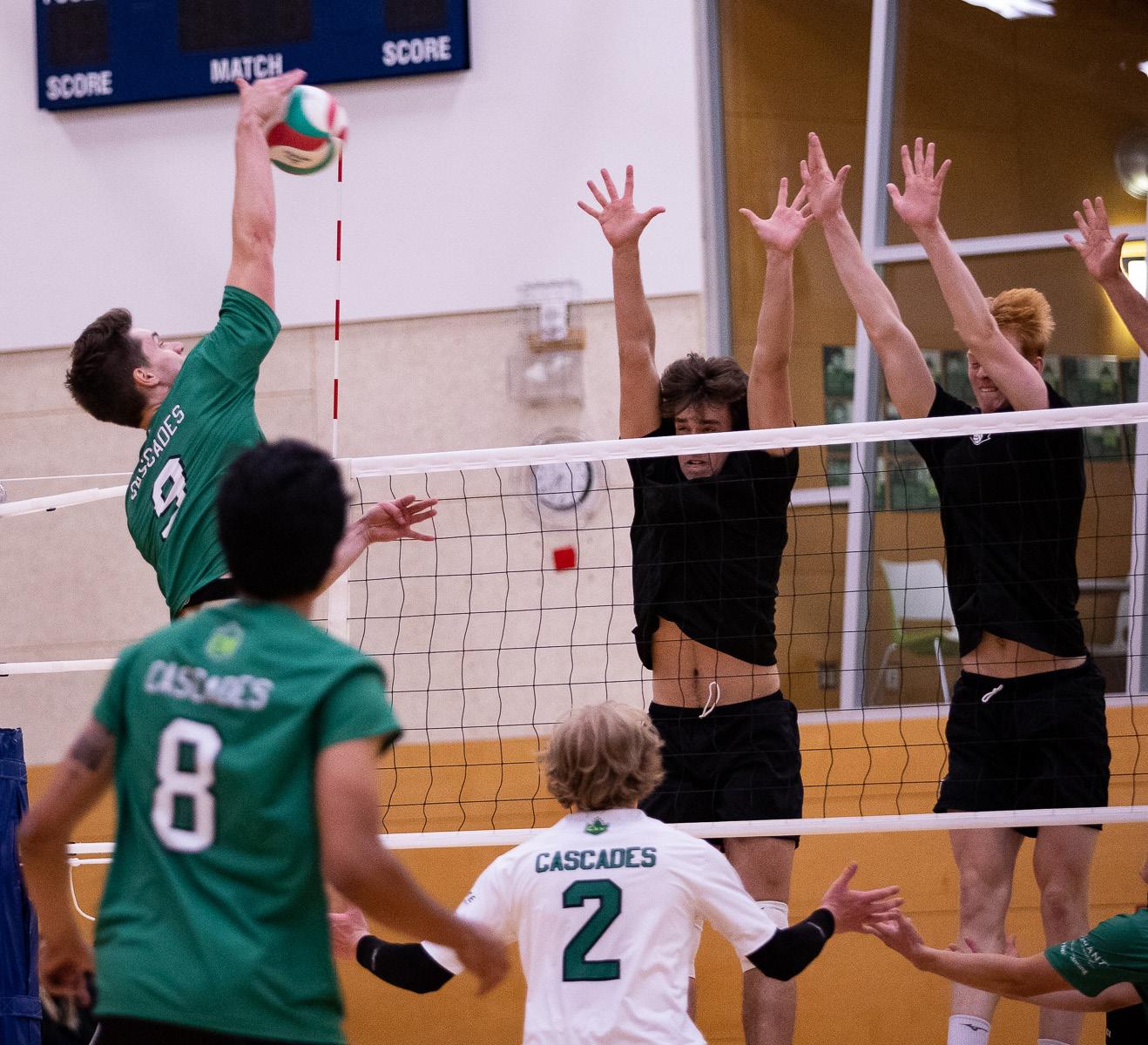
In a post-COVID shutdown return to conference-wide play, the Cascades will compete in twenty-four games this season. The twelve home and twelve away games will be split evenly between the Fall and Winter semesters. Can ada West playoffs are scheduled to start in late February 2023 before feeding in the U Sports national champion ships in mid-March 2023. With a full schedule this season, the Cascades look to build on last year’s wild card entry into the playoffs.
A busy offseason saw the men’s volleyball program sign some experienced veterans to bolster their ranks as they look towards the 2022–23 season. An interesting signing has ex-WHL and Acadia University hockey player Max Paddock joining the Cascades. Paddock’s previous volley ball experience includes a AAA varsity high school pro vincial championship before he left to play competitive hockey. Overall, the men’s volleyball program looks to es tablish itself as a perennial playoff contender in the highly competitive Canada West league.
The Canada West men’s volleyball conference has been dominated by local rival, the Trinity Western Spartans, who won their second straight championship in 2021-22, and the Cascades hope to put an early dent in the Spartans hunt for a three-peat at the home opener at the end of Octo ber. Attend live Cascade action at the UFV Athletics Centre or follow the Cascades online at gocascades.ca.
The BC Lions won an important game on Oct. 15 that, with one more win, means home-field advantage in the playoffs.
 TERYN MIDZAIN
TERYN MIDZAIN
While football season has started in the states and across the global market, it’s important to acknowl edge and showcase Canada’s own football league, the CFL, which starts at the beginning of summer. A time to show love and support to the BC Lions, Vancouver’s CFL team, which also happens to be Vancouver’s only modern-day championship-win ning professional sports team. The Lions won an important game last Saturday, Oct. 15, against the Winnipeg Blue Bombers, showing that even after a downturn at the half of the season, the Lions are strong enough for the postseason and contenders for the championship.
For non-CFL fans, here is a quick recap of this 2022 season. The Lions had an explosive first half, going 8-1 at the beginning of the season — a sur prise to fans, as the team has normally sat in the middle tier of the CFL since 2016. With one of the best quarterbacks in the league, B.C.-born Nathan Rourke, helming the offense, combined with one of the best receiver corps in the team’s recent history and a strong defensive line-up, the Lions looked like strong championship contenders.
A sudden twist of fate, with Rourke suffering a foot injury against the Saskatchewan Roughriders on August 19, took the young star out for the season. Since then, the Lions have only won three out of the last seven games, mainly thanks to their strong de
fence and special teams. They eventually settled on Vernon Adams Jr. as quarterback, traded from the Montreal Alouettes, to helm the offence in Rourke’s absence
Determination and defence have kept the Lions managing to hold onto second place in the west di vision and overall, but not far ahead of the always postseason-strong Calgary Stampeders in third. Both teams clinched positions in the fast-approach ing playoffs and are positioned to play each other, making this weekend an important one to deter mine which of the long-term western rivals would secure home advantage in their playoff game.
Luck blessed the Lions on Oct. 14 with the Stam peders losing to the Hamilton Tiger-Cats 35-32. This means that the Stamps couldn’t tie the Lions’ season
record before the Lions face off against the first-place and two-time Grey Cup winning champs, the Win nipeg Blue Bombers on Oct. 15.
The Lions played well last Saturday, winning 4032, sealing the victory over the Bombers with an in terception and 102-yard return for a touchdown by T.J. Lee, late in the fourth quarter. The final touch down was the Lions’ second pick of the night — the first one was by Marcus Sayles in the second quarter. The interceptions are a testament to the resilience of the Lions’ defense which has carried the team throughout the season and this game. Terry Wil liams, the Lions’ punt and kick returner on special teams, returned for 341 yards. That allowed the Li ons' offense to run successful running plays, getting running back James Butler 104 rushing yards, and one touchdown.
While the performances of the Lions’ defence and special teams were spectacular, the offence still has some kinks to work out. Vernon Adams Jr. complet ed 59 per cent of his passes for 138 yards and one touchdown, a rather low number in the CFL, but looked more confident running the offence.
The game against Winnipeg last week closed the Lion’s home games for the season, going onto the road against the Edmonton Elks and Winnipeg again to end the season. The Lions only need to win one of these games to secure home-field advantage for the playoffs, and the best chance is against Edmonton, one of the worst teams in the league, and bottom of the western division this weekend on Oct. 21.
Abbotsford Senior Secondary School has founded its newest club, “Just Chill.” With the initiative of two students, Man uel Boada and Naya Poar, they created a fun and safe space for children of all ethnicities, religions, and interests. This movement hopes to inspire the Fra ser Valley community to move towards meaningful and long-lasting change lo cally and in the global arena. The initial intention of creating a safe space was to prioritize students who felt they didn't fit in anywhere, and those who felt a longing to be accepted and be part of so cial groups. A great number of students were interested and needed an environ ment like this and the club has since evolved into something much greater than anticipated.
By partnering with local community and business members, the club’s up coming pursuit is to fundraise for the Indian Residential School Survivors So ciety and Indspire (formerly known as National Aboriginal Achievement Foun dation) by selling homemade bannock. This is to expand and give assistance to Indigenous survivors of residential schools and their descendants, as well as to show respect while continuing to educate the public.
With the interest and support of the student body and faculty, the club has gained financial support in the form of donations. This has led the club to organize and fundraise for multiple
profound causes like women at risk of violence and abuse, health disorders like epilepsy and cancer research, and environmental education on areas such as climate change and waste reduction. To do this, they have partnered with or ganizations like SARA for Woman, Ecol ogy North, Anxiety Disorders of B.C. and more.
This resourceful group of high school scholars aren't stopping there. With sponsorships from businesses across the region, these students are also support ing countries like Armenia and Ukraine through relief society associations. To take it one step further, the club will also be working with McMaster Univer sity on the significance of community for youth in the 2022 YDI Symposium in front of the Ministry of Health.
What humbly began in room A104 at Abby Senior Secondary has flourished into a group of students doing substan tial good for us all. The creation of this social club has knitted our community closer, has allowed high school students to feel safe and valued and has inspired our neighborhoods. Through small and large initiatives, “Just Chill” has become the heart of Abby Senior Secondary and a vessel in our community by flourish ing friendship and inspiring us to create the change we wish to see in our world.

Participation is highly encouraged for upcoming events and fundraisers for The Indian Residential School Survivor Society happening Nov. 17, 2022 on the Abby Senior campus.
culture@ufvcascade.ca Anisa Quintyne — Culture EditorWith Halloween just around the corner, we’ll discuss how this spooky holiday came about, why animal masks do not work against angry Italians, and why children are the enemy!
A night of dressing up as ghosts and de mons is definitely not what the Christians had in mind when they decided on a holi day to celebrate their dead martyrs and saints. In all fairness, they can’t really claim something they didn’t come up with. After all, just like most things in history and cul ture, nothing is lost — everything is stolen.
Just like jack-o’-lanterns and Fright Nights stole Halloween from the Church, the Catholics stole it from the Romans, who stole it from the Celtics, who probably stole it from the aliens. Either way, Halloween has a long history of reinventing itself every couple hundred years — it’s the Madonna of holidays.

Our story starts off in Europe, thousands of years ago. Samhain, as our Halloween was originally called, was a festival for the Celtics to celebrate their deceased at a night when the dead walked the earth. They also made sure to wear animal masks to ward off the evil spirits, a tradition that lives on to this day — works great against demons, but not as well against your aunt’s disastrous pumpkin pie attempts.
They also don’t seem to work against Romans either, who eventually conquered most of the Celtic territory and stole Sam hain from the original redheads. Tough luck for the Celtics, but lovely for the spirits, who now had a legion of angry Italians worship ing them on top of the mask-wearing gin gers. Furthermore, Samhain also coincided with the Roman celebration of fruit goddess Pomona, so now they were celebrating the dead, but also apples, because why not?
Eventually, as Christianity spread and overtook the Roman Empire, Samhain was stolen yet again. Now, in addition to the dead (and apples), we were celebrating the martyrs and the saints. It was originally called All Hallows’ Eve, but because we hu mans are lazy with our spelling, we eventually gave up the tripleword title for simply Halloween — it’s catchy, I’ll give them that.
But how did Christians start twisting their nose at the holiday they stole, you may ask? They fought and defeated both the mys tic Celtics and the angry Romans. Who could steal Halloween from such brave conquerors? As it turns out, they had yet one great enemy to face, one they just could not defeat: children
(That might have been a bit dra matic, but I stand by it — some
children are, indeed, the devil’s spawn.)
As Halloween took a sharp turn away from prayers and devotion, foolish chil dren, teens, and young adults found in it an opportunity to wreak havoc in their peace ful 1900s neighborhoods. Soon enough, All Hallows’ Eve lost its religious essence and became the secular holiday we recognize today.
Now, it’s mainly an opportunity for kids to get cavities from eating too much candy, for teens to pee their pants after watching The Ring for the first time, and for young adults to do what they do best: get drunk and reckless at a stranger’s party while wearing the minimum legal amount of clothing.
The truth is that Halloween has gone through many changes over the centuries, but one thing remains constant: the human obsession with death. Samhain, All Hal lows’ Eve, Halloween… They’re all different ways of celebrating that which is the most natural and certain thing all of us will face at some point. Either way, whether you’re a natural redhead, an angry Italian, a pious Christian, or a foolish teenager, there’s a fun Halloween night out there waiting for you.
For an entire month, we’ll watch horrify ing movies with terrible writing, storm our sleep with nightmares of bloody murder ers, and pay to go into haunted houses for no other reason than to crap our pants. It makes no sense. Still, when November rolls around, we’ll realize that it wasn’t so bad, for, as it turns out, the once grim realization of our mortality has now become the per fect memory of a fun night out with friends, full of laughter, magic, and intrigue.
A newly formed club is taking action to help people in our community on a local and global scale
Made by Anisa
Down:
1.Starry Night.
8.The School of Athens.
Taurus — Apr 20 to May 20
If
3.Pioneered cubism.
4.Leading contributor to pop art.
with a pearl earring.
of the High Renaissance.
7.The Mona Lisa.
and I artist.
artist.
Soup Cans artist.
with a Pearl Earring artist.
Chapel ceiling artist.
Lisa artist.

Night artist.
School of Athens artist.
Gemini — May 21 to Jun 20
Don’t be too hot or cold. Find a middle ground.
Cancer —Jun 21 to Jul 22 Those emails aren’t going to respond to themselves.
Leo — Jul 23 to Aug 22
-
Sure, going out every weekend is fun, but those grades are looking a bit neglected.
Virgo —Aug 23 to Sep 22
You hate talking about yourself, Virgo. We know. But it’s important to be mindful of your own issues.
Libra — Sep 23 to Oct 22
Not everything is in
and white. These
and while
Scorpio — Oct 23 to Nov 21
Yes, Scorpio. Lying is when you purposefully spread misinformation.
Sagittarius — Nov 22 to Dec 21
Making empty promises to yourself isn’t ambition. Schedule that flight or submit that proposal and get it over with.
Capricorn — Dec 22 to Jan 19
If that text message exceeds the 1200 word count, maybe reevaluate how serious this argument actually is.
Aquarius — Jan 20 to Feb 18
Anxiously avoiding those deadlines isn’t going to make them go away faster. They’ll keep approaching, and approaching, and…
Pisces — Feb 19 to Mar 20
Do a wellness check on your body. How’s your posture? Sit up straight.

On Nov. 3 and 4, UFV will be hosting their annual literary festival that celebrates two days of discussion on literature, poetry, and various types of media. This year, the Fraser Valley Literary Festival has invited Jordan Abel on board as one of the keynote speak ers.
Abel, a queer Nisga’a writer from Vancou ver, is located in Edmonton on treaty six ter ritory. He writes creative nonfiction, fiction, and poetry, and is the author of several pub lications including Un/inhabited and Injun, which won the 2017 Griffin Poetry Prize. He currently teaches at the University of Alber ta as an associate professor in the Faculty of Arts, english & film studies department.
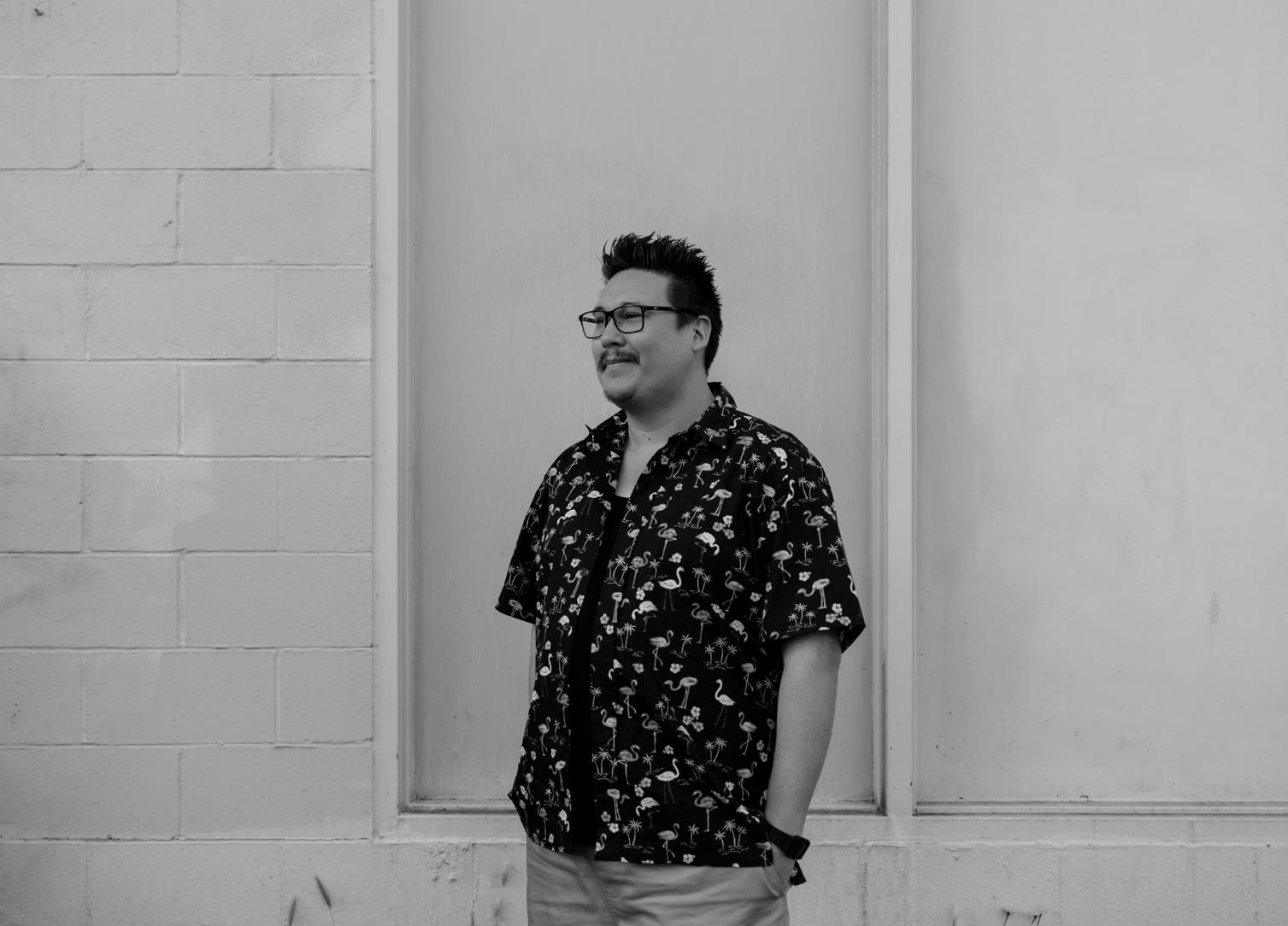
“I’m looking forward to teaching prob lem-based writing,” Abel said, outlining the poetry workshop he plans to teach at the festival. “Writing that originates with an interest in solving particular problems or answering particular questions. So writ ing that is motivated by an interest in social change and social justice.”
ingful questions about their own lives and their own projects, and to build their writ ing outwards from those questions.”
In 2017, Abel stayed at UFV as part of the Writer in Residence fellowship program. He described his experience as being “su per cool,” stating, “ I really loved it there. I met a lot of really interesting students, staff, faculty members, and people just from the community, and I thought it was a really amazing, welcoming environment.”
The Fraser Valley Literary Festival will include workshops and panel discussions ranging from “The Fantastic & the Mun dane: Symbolism in the Everyday,” to “Lie to Me: Truth and Fiction in Writing.” The festival, which has been ongoing since 2018, has brought talented authors together from across the country as a way of sharing simi lar stories, and passions, in both literature and the creation of it.
“I'm always interested in the way that these types of festivals bring people togeth er. You know, writers from the area and also writers from elsewhere,” Abel said.
SYDNEY MARCHANDThe Cascade Kitchen is a student-run food column that brings you budgetfriendly recipes and cooking tips. If you want to see your own recipe featured next, get started by reaching out to culture@ ufvcascade.ca.
Usually, around this time of year, I swap out my fruit smoothies for a big bowl of warm oats. But with the unusually hot October weather in the Fraser Valley, I have opted to start my mornings with a bowl of chia seed pudding instead. The added hemp hearts and ground flaxseed keep me fuller for longer and add a nice nutty flavour while giving an extra boost of protein and omega-3s.
Prep time: 5 minutes
Makes: 1 serving
Ingredients:
2 Tbsp whole chia seeds
1 Tbsp hemp hearts
1 Tbsp ground flaxseed meal
½ Tbsp maple syrup
½ cup plant milk
(I like oat milk the best)
Dash of salt Sprinkle of cinnamon
Method:
1. In a sealable container, combine the chia seeds, hemp hearts, flaxseed, cinnamon, and salt to gether.
2. Add the maple syrup and plant milk and stir until well com bined.
3. Let the mixture sit for 2 minutes to allow the chia seeds to bloat and thicken up a bit.
4. Stir again, seal the container, and store in the refrigerator for two hours or overnight.
5. Add your preferred toppings (berries, fruit, nut butter), and enjoy!
“In my book NISHGA, one of the things I talk about is writing this book because I have heavy questions about my life that I'm really interested in trying to answer. And the questions are, what does it mean to be Indigenous? To be severed and dispos sessed from my own territory? What does it mean to be an intergenerational survivor of residential schools, and what does it mean to be an urban Indigenous person? So those questions are guiding forces in the book, and every page attempts to answer those questions.”
“My approach to teaching poetry is about trying to get students to ask similarly mean
“I think that cross-pollination of writ ers from all over the place come together, including Edmonton which is where I'm at now, those conversations I always find really meaningful and productive when you get a chance to move outside of your usual circles and ways of being.”
For those interested in attending the festi val and checking out Abel, along with other guest speakers, tickets can be reserved on Eventbrite.



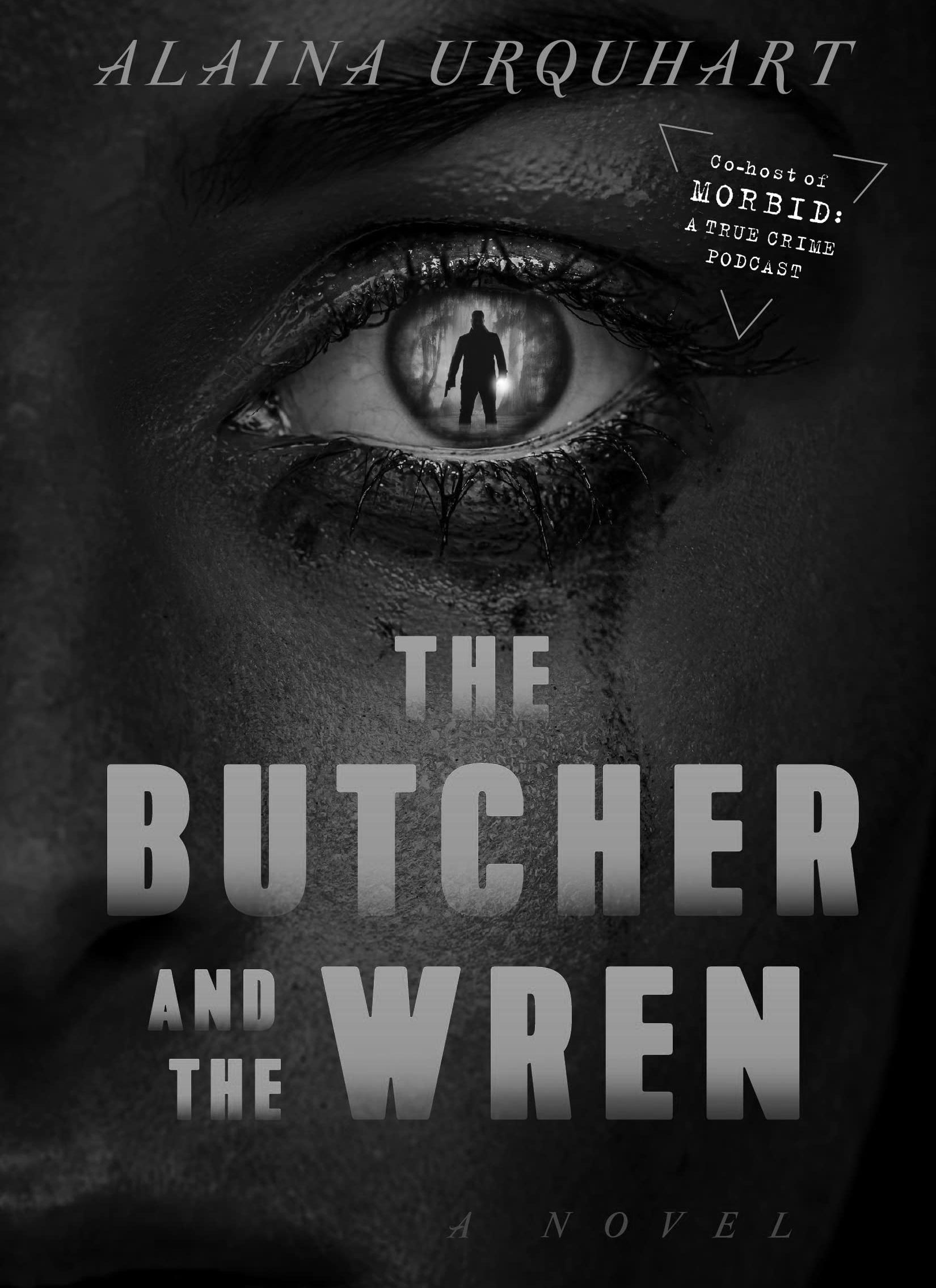 MARIE-ANGE ROUTIER
MARIE-ANGE ROUTIER
Alaina Urquhart, an autopsy technician and co-host of the podcast Morbid: A True Crime Podcast, debuted as an author this past September with the release of her book The Butcher and the Wren. This mystery-thriller is a story about a series of murders in the bayous of Louisiana, told from the alternating perspectives of a forensic pathologist and the serial killer in question. It’s a book with an interesting premise and written by a professional in the field. The book had a lot of promise, yet it fell a little flat.
The two characters were well written with regards to their psyche and personalities, giving them a well rounded and three dimensional feel. The serial killer, Jeremy, was especially fun to read as he had a certain disdain and dryness in his worldview which tickled my darker sense of humour. He is depicted as intelligent but not too smart as to make him feel invincible. For the most part he felt cool, calm, and collected. However there were times where he was emotionally trigger-happy which, to my enjoyment, made some of his actions and decisions less predictable. For the most part he was human, and humans make great monsters.
American McGee’s Alice (2000) remains faithful to its source, yet it never uses Wonderland as a crutch. Its refreshingly original interpretation makes it a classic that still feels unique today.
KIAN JOHNSONI received American McGee’s Alice (2000) for the PC as a gift this summer, and it’s the first game I’ve completed in years. In it, you play as Alice on a spiral deep into a nightmarish version of Wonderland years after a certain tragedy. This is an edgy version of the well-known Alice’s Adventures in Wonderland tale by Lewis Carrol, in which the player is given a knife and forced to stab things. Considering the concept and year of release, it constructs itself with surprising grace.

The subversion of Wonderland may seem like an awfully tired concept from the start. After all, a world already packed to the brim with such deliberate weirdness seems ripe for corruption. However, American McGee’s Alice takes such intense care of its presentation and dialogue that it effectively straddles the line between being a generically uncanny remake and a completely new horror personality. It revives the brand’s established characters and crafts dialogue that suits them while simultaneously twisting everything to the limits of recognition. The MadHatter rips apart time as assuredly as he dissects his companions, and the Queen of Hearts’ tendrils pierce the space between worlds. Almost everyone you meet speaks of Alice’s failure as a forgone conclusion as she struggles to maintain her confidence. Even the music seems to break down as you tread deeper.
The game features plenty of grotesque concepts and imagery, but they don’t
feel designed to frighten. American McGee’s Alice isn’t a directionless celebration of gore, but rather a loose story of reaffirming self-worth dressed in bloody clothes. As such, it features no jumpscares and few other elements designed to invoke terror. Instead, the decrepit atmosphere reflects Alice’s internal turmoil and chips away at any notion of consistency.
The game received mainly positive reviews upon release, but was criticised for its simplistic fighting mechanics and puzzle design just as much as it was applauded for its innovative looks. Complex gameplay never felt like a priority, though. The game concentrates its talents in its environmental storytelling, and it delivers vocal performances that reciprocate this ambience loudly. I often found myself meandering and interacting with every possible thing, which often led me to where I needed to go anyways. I particularly like the Cheshire Cat, whom you can summon with a hotkey to deliver cynical advice and quips throughout.
It’s not often I play a game I find worth completing, let alone one based on an already popular franchise. What I love most about American McGee’s Alice isn’t how it effectively twists the lowhanging fruit Wonderland represents. It’s that, despite the obvious call of parody, the game draws its own unique identity from the fabric that made the original franchise so well-known. It sees the fruit for the whole tree, and as a result it remains timeless.
The forensic pathologist, Wren, was also well rounded as a character, but less enjoyable to read. As Urquhart has an incredible amount of knowledge through her professions on serial killers and medical procedures, the chapters in Wren’s point of view suffered the unfortunate consequence of feeling pulled from a textbook. Her chapters were very informative, with technicalities that felt more and more like the sci-fi jargon spoken by Geordi La Forge in Star Trek: The Next Generation. For myself, I found it jarring; after all there's only so many times I can read “lividity” and “cypress tree” before wanting to throw a thesaurus at something. The book itself was an easy read as it is a short book with short chapters, and could easily be enjoyed in small bites over time or binged in an afternoon. Some of the descriptions became quite repetitive over time; a shortcoming that can be forgivable for a debut author, but something to consider if that’s a personal pet-peeve of yours. The overall plot was nicely paced with a long action scene in the middle to keep you entertained and engaged during the section of the book where many novels fall flat. The main twist was familiar and predictable for those who read a lot in this genre but still quite pleasant. As a first novel, Urquhart should be proud as this book can be easily enjoyed by many who appreciate true crime. It will be interesting to see where she goes from here.
Despite its source, American McGee's Alice builds its own brand of horror
Rewind //
Netflix’s latest attempt into falling in love brings curiosity, without diving into the happily ever after.
REMINGTON FIORASODated and Related is Netflix’s latest reality dating show com bining entertainment with cringe-worthy moments. The se ries involves teams of two siblings, step-siblings or cousins acting as a wingperson for one another as they compete for a chance at love and winning a cash prize of $100,000 USD. For fellow Netflix reality show binge-watchers, Melinda from season two of Too Hot to Handle acts as the host.
The show started off very interesting with a challenge given by Melinda on learning how well the siblings knew each other. The winning sibling team of the first challenge was able to pick the duo that they wanted to go on a double date with. I loved seeing what the responses were while be ing asked if the contestants knew the age of their siblings’s first kiss, their sibling’s biggest turn on, their sibling’s first cartoon character crush, their siblings’ best asset, and their siblings’s number of sexual partners. The game felt short as questions were targeting individuals instead of everyone answering at the same time, but it set up the expected awk wardness and cringe of the show.
I was looking forward to learning more about each cast member, but was let down when the series was over. The producers drifted away from every team participating in a game, to new duos entering the villa and automatically getting a date. They received individual challenges to win dates, and were incredibly awkward to watch. For exam ple, the host proposed a challenge by phone to siblings
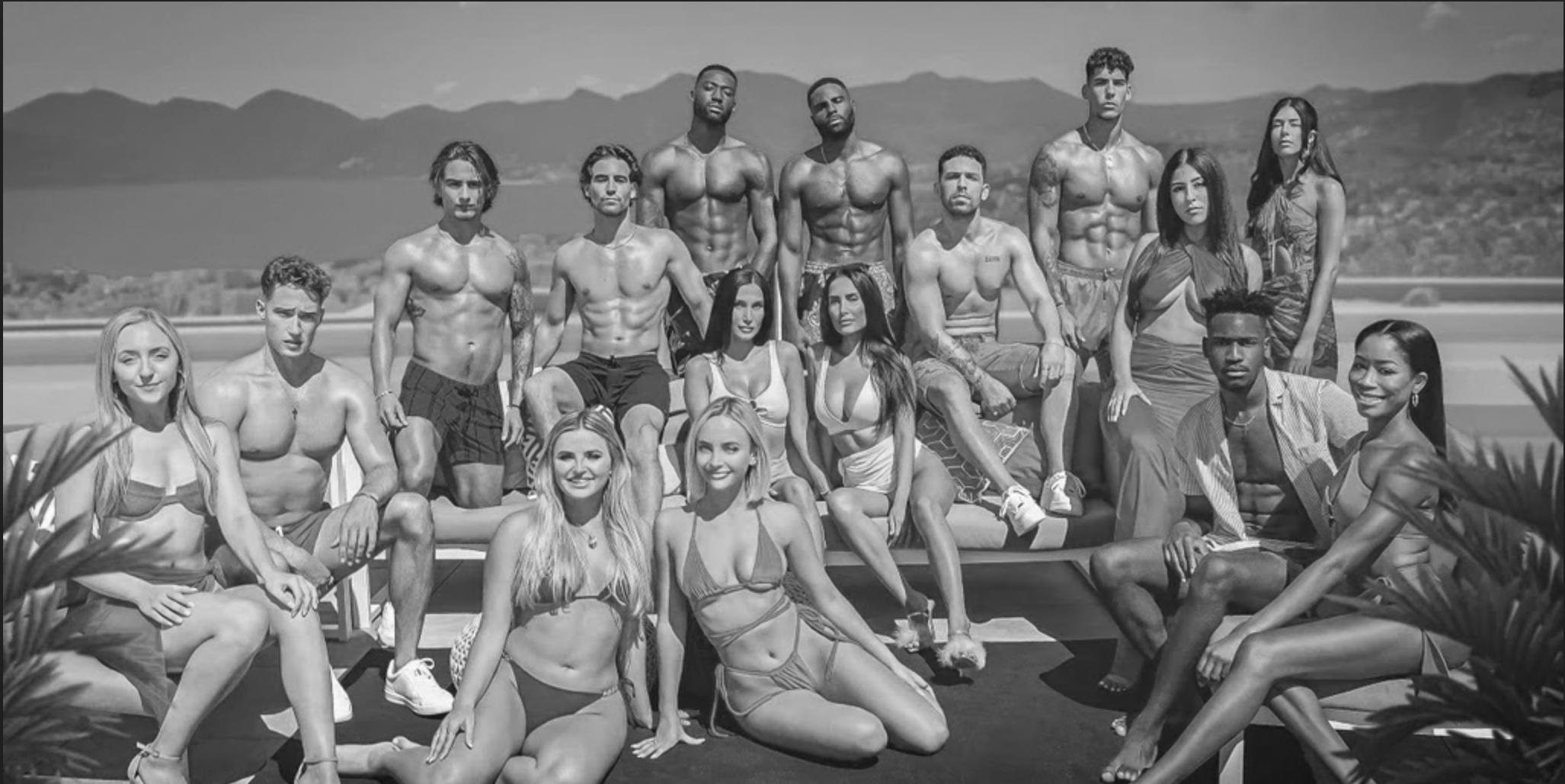
Alara and Ceylan, in which they needed to convince some one in the villa that they needed privacy in the bathroom for a bubble bath. The first thing that came to my mind was, "What was the production team thinking?"
The show advertises and constantly mentions siblings being wingpeople. One person in the duo was supposed to be “worse” at finding or staying in relationships and need ed help. Yet, the direction seems to shift as you proceed through the episodes. Every individual on the show need ed to make a connection — or at least fake it — to become a couple. There were no longer double dates with siblings or a need to be a wingperson. This changed the 'twist' that the show placed on dating, leading to a lack of consistency and direction by the producers.
Beyond this, as a viewer it felt like individuals were mentioning what they like in a person’s looks after dates or deep conversations rather than knowing a person and making a connection. What are the personality traits that they like? What interests do they have in common? What do they do in life (ie. jobs, hobbies, etc.)? What are they looking for in a potential partner? Contestants mention having deeper discussions to get to know each other, but these were not in the editing cuts. The lack of a portrayal of personal connection makes it difficult to root for a couple to make it out into the real world or get a sense of “knowing” the cast without looking into their Instagrams afterwards — let alone believing that they know each other well. Is it just the cast themselves, or is it the editing?
I’m obsessed with reality shows on Netflix for the drama
and am ready to hear the tea without experiencing it my self. Yet, there was a lack of it until the prize money came more into play. A pair of brothers on the show kept men tioning winning it. The other castmates expressed the same opinion as myself — that it was annoying and ingenuine of the siblings. While I assume that the people on these shows are more focused on money and social media fame than love, it is nice for individuals to not outright talk about the money on the table. It really shouldn’t be the only source of drama that resonates.
It was not a real competition nor did it feel justifiable for the cast to determine a winner. There were a lot of con versations, a lack of group challenges, and couples were not shown that much. At the bare minimum, contestants could demonstrate growth in developing relationships like Too Hot to Handle. The production made the decision to go from a sibling team winning it to a newly formed couple, leading to more inconsistencies with the direction that they were going to take. When voting occurred, three couples were left to vote in front of everyone, without anonymity or dramatic impact. There was no sense of why people were voting for who they did, with the exception of siblings vot ing for their family members.
Do I believe it is a good series? No. The whole concept of the show is awkward to watch. Will I binge-watch ev ery follow-up season? Yes, without hesitation. If a second season is ordered, I hope the producers modify the premise to make it more interesting rather than forgettable shortly after watching it.

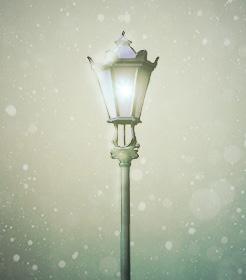


Songs with other artists' names in them are somewhat of their own trivia category — Low has a song called ‘Hatchet’ in which the entire lyrics refer to the rivalry between The Bea tles and the Rolling Stones. This one references Bil lie Eilish’s big t-shirts, and how they’re so silently stylish.

This song has established it self as a pretty massive microhit — micro in that it’s a one minute and 42 second micro smash. Just like Gucci Gang, whatever songs are on the Mark, Tom, and Travis Show, and so many others. But ISN’T it homophobic?
This is the third song to come out from this longtime Fraser Valley based quartet — which used to be a quintet, now liv ing in Winnipeg, Montreal, and still Chilliwack — released off their sophomore full-length, Circuitous. It’s their first with Flemish Eye after the EP “III” last year. Playing Abby soon!

So many of this artist’s songs were hits that I hadn’t even realized she was less a cult figure than an international phenomenon, especially after having just been shown this era-appropriate video from the early 80’s. For all the Rus sophobia abound in foreign policy discussions lately, it’s lighthearted fare.
Despite incredible effects and cool cinematography, Hellraiser
fails to add any fresh narrative content to the story.
KELLYN KAVANAGHHellraiser (2022), released on Oct. 7th, marks the eleventh installment in the Hellraiser franchise. The film, which is directed by David Bruckner (known for the Netflix horror film The Ritual), attempts to put a fresh spin on an overtired, critically suffering series. The outcome is overall unsatisfactory albeit fun to look at. The film feels tired, riding on the tails of an over-saturated franchise with very little new ground to cover.
The story begins with a young man attending a wealthy person’s party and being led to a back room full of esoteric artifacts for a meeting with the billionaire host. Inside the room, the individual finds an alluring item covered in strange markings. The host of the party informs him it’s a puzzle, and solving it will win him a prize. Those familiar with the franchise will recognize the lament configura tion immediately. Therefore, it’s no surprise when the young man solves the puzzle, gets stabbed by a hidden blade triggered upon completion, and gets attacked by the legendary Cenobites (the franchises primary antagonists; once human creatures dedi cated to a life of torturing others in a supernatural realm). Hooked chains launch out of nowhere and suspend the young man in the air while the billion aire bows to his knees believing he’s won an audi ence with God. Spoiler alert, the situation doesn’t bode well for anyone involved. This sets the gen eral rhythm for most of the action that takes place within the film. The action scenes are gruesome and the art direction is creepy, however, the film is shockingly free of any genuine scares.
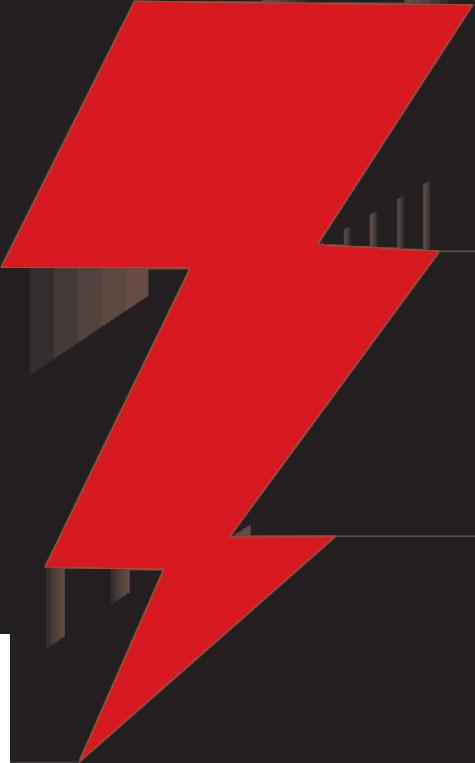
Where Hellraiser succeeds the most lies within its visual effects. The design of the Cenobites is
familiar, but executed with masterful precision. In comparison to some of the blockbuster productions we’ve seen coming from Marvel lately, it’s great to see a special effects team being given the proper time and budget to create incredible creatures that fit seamlessly into the fictional world. Additionally, the CGI moments where Leviathan-sized machina tions fall out of the sky, stairways into Hell open up in gravel roads, and bathroom walls transform into the interior walls of Cenobites’ torture chambers are done amazingly well.
The cast play their roles well, and it’s nice to see Brandon Flynn outside of 13 Reasons Why. The choice to cast Jamie Clayton as Pinhead was also excellent, as this version of Pinhead feels much more accurate to the androgynous character de scribed in Clive Barker’s original novella, The Hell bound Heart
Unfortunately there just isn’t enough new ground to cover in the story to justify a resurrec tion of the franchise. After ten previous instalments of watching people solve puzzle boxes in hopes of experiencing otherworldly sexual pleasures, only to end up chained and tortured by sadomasochis tic demons, the horror loses it’s effect. Despite the incredible visuals, good acting, and higher produc tion budget, it still feels like the franchise is beating a dead horse. There are some fan theories circling the internet saying that this new version of Pin head is canonical to the first film, with the character Kirsty taking over the job from the original leader of the Cenobites. However, these are just theories without any confirmation. Overall, the story falls flat. Maybe it’s time to put the chains down and let our torture fiends take a breather. Surely they get as tired of exerting the same violence over and over again as the viewers get from watching it.
Some of these events require tickets, and most are online. If something catches your eye, take to the internet for more details, including those about social distancing measures for in-person events.
Art Exhibit: Projections @ S’eliyemetaxwtexw Gallery Room B136, 12:00 - 5:00 p.m.
Self Care Yoga @ Abbotsford Room E150, 12:10 – 12:50 p.m.
Drop in Badminton @ Abbotsford, North Gym, 7:30 - 10:00 p.m.
Drop in Open Court @ Abbotsford, North Gym, 4:00 - 5:30 p.m.
Drop in Open Court @ Abbotsford, North Gym, 11:30 a.m - 2:30 p.m.
Creative Spotlight of the Month @ Abbotsford Room B101, 1:00 - 3:00 p.m.
TTC Pizza Party @ Trades and Technology Centre, 11:30 a.m - 12:30 p.m.
Summit Circuit @ Abbotsford Room E150, 11:30 a.m. – 12:10 p.m.
Art Exhibit: Projections @ S’eliyemetaxwtexw Gallery Room B136, 12:00 - 5:00 p.m.
Blood Donation Clinic @ Student Union Building, 1:00 - 8:00 p.m. Drop in Spikeball @ Abbotsford, North Gym, 2:30 - 4:00 p.m.
Drop in Gender Inclusive Women’s Basketball @ Abbotsford, North Gym, 4:00 - 5:30 p.m.
Game Night in the Global Lounge @ Abbotsford Room B223, 4:30 –7:00 p.m.
Community Dinner @ Bakerview Church Abbotsford, 5:30 p.m. Learn to Play: Scythe @ Boardwalk Cafe and Games, 6:00 p.m. TREASON/OBSESSION Art Show @ ISSSUE Studio, Abbotsford
Art Exhibit: Projections @ S’eliyemetaxwtexw Gallery Room B136, 12:00 - 5:00 p.m.
WVB at UBC Canada West @ Vancouver, 6:00 p.m.
MSOC vs. UNBC Canada West @ Abbotsford, 7:00 p.m.
MBB vs. Mount Royal Exhibition @ Abbotsford, 7:30 p.m.
MVB at UBC Canada West @ Vancouver, 7:45 p.m.
UFV Open House @ Abbotsford Campus, 10:00 a.m - 2:00 p.m.
Vintage Harvest Sale @ Langley, 10:00 a.m.
MBB vs. Regina Exhibition @ Abbotsford, 4:00 p.m. WVB at UBC Canada West @ Vancouver, 5:00 p.m. MVB at UBC Canada West @ Vancouver, 6:45 p.m.
Dungeons and Dragons Walk-in @ Nerd Haven Games, 11:30 a.m. MSOC vs. UNBC Canada West @ Abbotsford, 12:00 p.m. Chilliwack Jets vs. Richmond Sockeyes @ Sardis Sports Complex, 5:00 p.m.
Chardon-SLAAAY: Halloween Edition @ Backyard Vineyards, 6:00 - 8:00 p.m.

Drop in Badminton @ Abbotsford North Gym, 12:00 - 2:00 p.m.
Art Exhibit: Projections @ S’eliyemetaxwtexw Gallery Room B136, 12:00 - 5:00 p.m.
Self Care Yoga @ Abbotsford Room E150, 12:10 – 12:50 p.m.
KIN Talks @ Chilliwack Campus, Room A1201, 1:00 – 2:30 p.m.
Art Exhibit: Projections @ S’eliyemetaxwtexw Gallery Room B136, 12:00 - 5:00 p.m.
Spin & Strength @ Abbotsford Room E150, 12:45 - 1:25 p.m.
Drop in Pickleball @ Abbotsford North Gym, 2:30 - 4:00 p.m.
Drop in Open Court @ Abbotsford, North Gym, 4:00-5:30 p.m.
Dungeons and Dragons Drop-in Adventures! @ Boardwalk Cafe and Games, 6:30 p.m.
Drop in Badminton @ Abbotsford North Gym, 11:00 a.m - 1:00 p.m.
Art Exhibit: Projections @ S’eliyemetaxwtexw Gallery Room B136, 12:00 - 5:00 p.m.
Self Care Yoga @ Abbotsford Room E150, 12:10 – 12:50 p.m.

SUS Public Board Meeting @ Large Boardroom (Room S3103), 2:00 - 3:00 p.m.

Zumba @ Abbotsford Room E150, 4:05 - 4:45 p.m.
Drop in Open Court @ Abbotsford, North Gym, 4:00 - 5:30 p.m.
SPP Market @ Abbotsford Campus S Building, 11:00 a.m - 2:00 p.m. Summit Circuit @ Abbotsford Room E150, 11:30 a.m. – 12:10 p.m.
Art Exhibit: Projections @ S’eliyemetaxwtexw Gallery Room B136, 12:00 - 5:00 p.m.
Drop in Spikeball @ Abbotsford, North Gym, 2:30 - 4:00 p.m.
Drop in Gender Inclusive Women’s Basketball @ Abbotsford, North Gym, 4:00 - 5:30 p.m. Game Night in the Global Lounge @ Abbotsford Room B223, 4:30 –7:00 p.m.
View our website for more details on current, local events.
